September 30, 2018
Martha O'Kennon
Zowie, can you handle this? This is the 5th Backyard Blog in September this year! The goldenrod is over and the asters are giving their all! But this patch of Autumn Joy Sedum bloomed in the north garden this week. It seems to like sun a lot better than shade. This aqua Bottle Fly steals a bit of color from the purple Aster. And - it happened. The Red Oak from down the street has given the acorn which rolled into my yard somehow. Its leaves are good fodder for several of the large fancy Moths.
 -
-
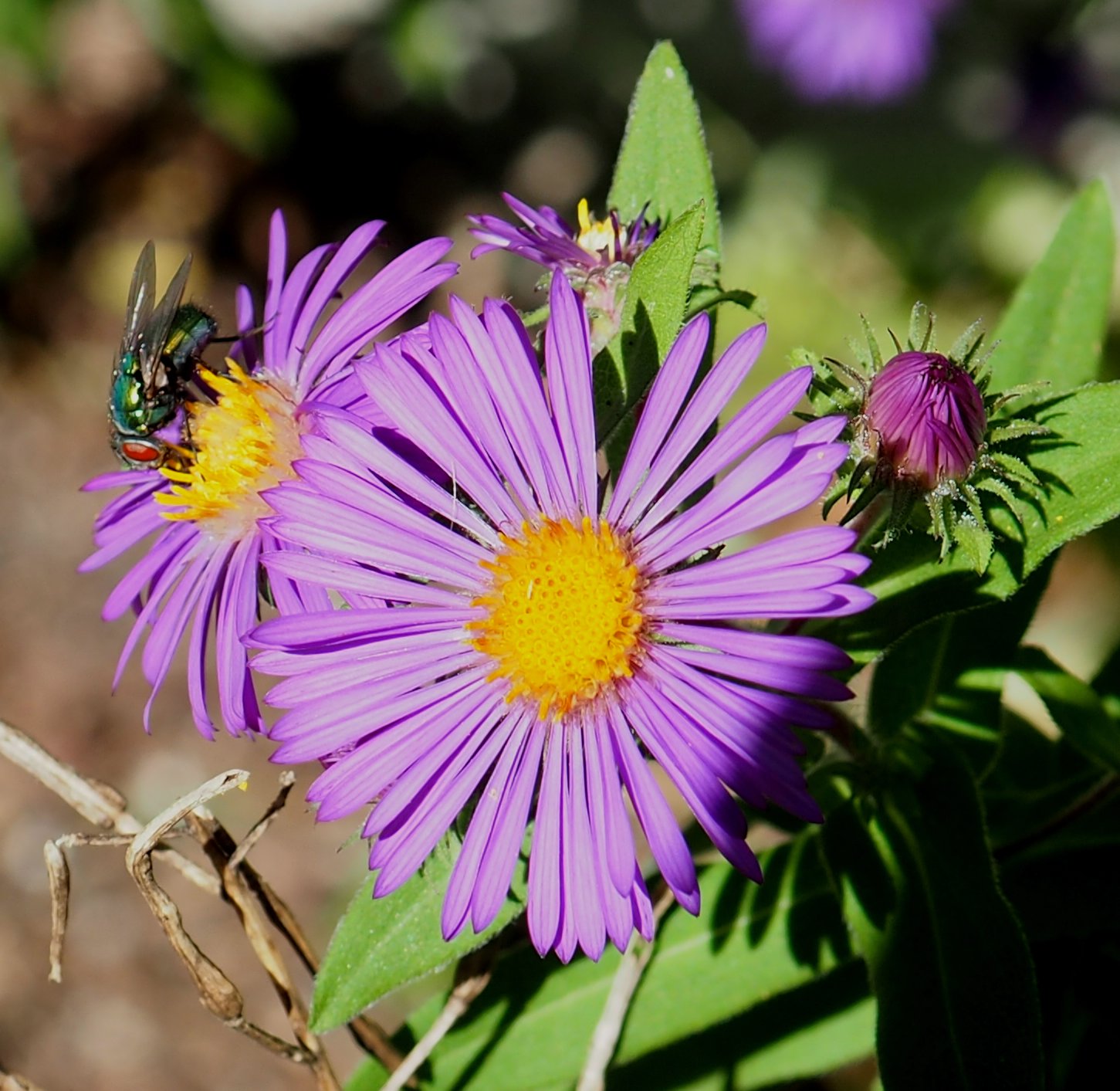
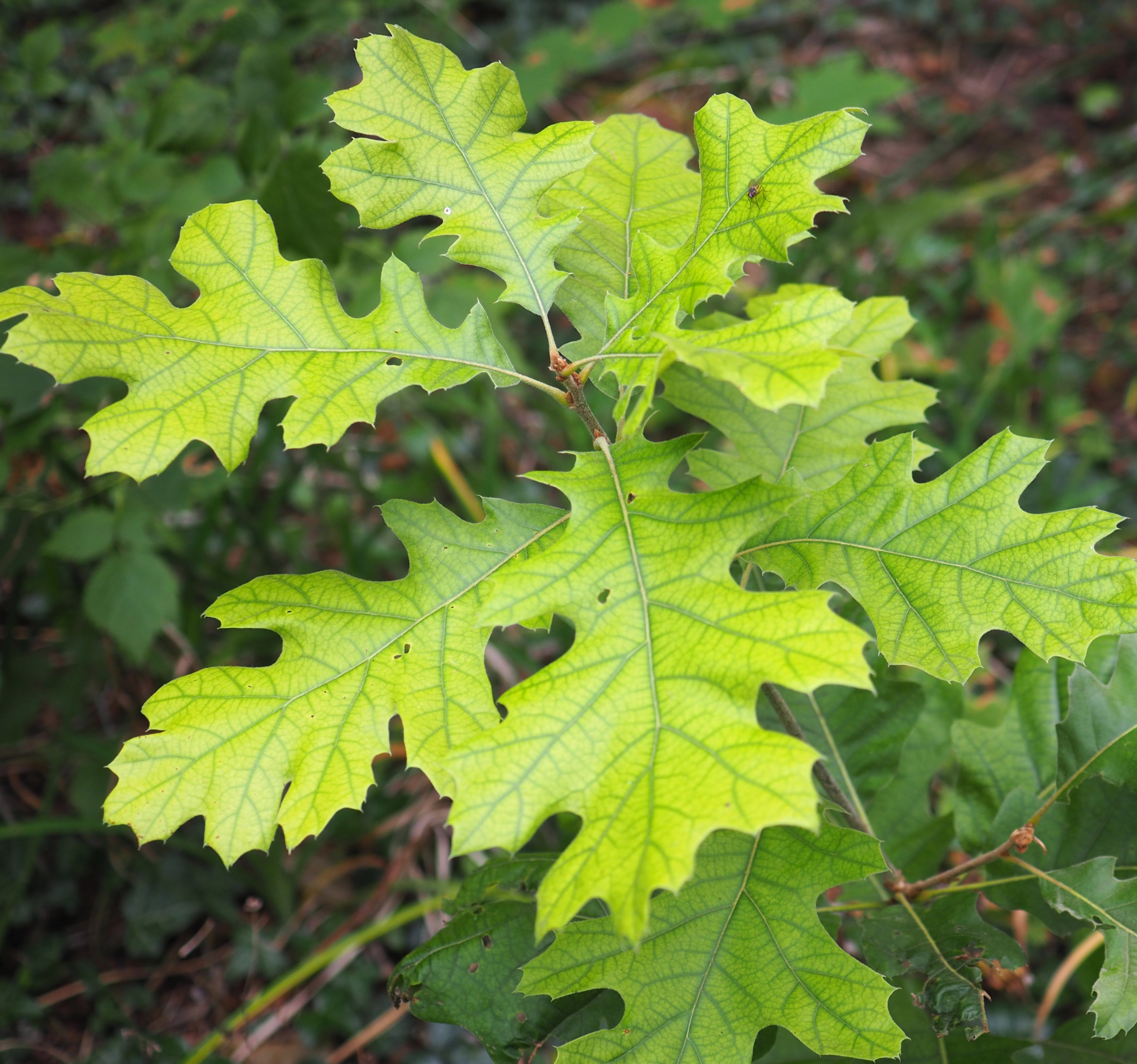
Remember that there is information in the name of the file for each image. You can see it by mousing over the image - look at the lower left of the screen. Or you can click on the image to get to the (usually) larger image. Then the info is displayed in the address line above. Sometimes the second click will actually display a different view of the original image.
This first ant, which I used to assume was one of the Carpenter Ants, is actually called a Small Honey Ant. Somehow I managed to call this mystery fellow a possible barklouse. Who knows? I will run it past iNaturalist and hope to get you a name.
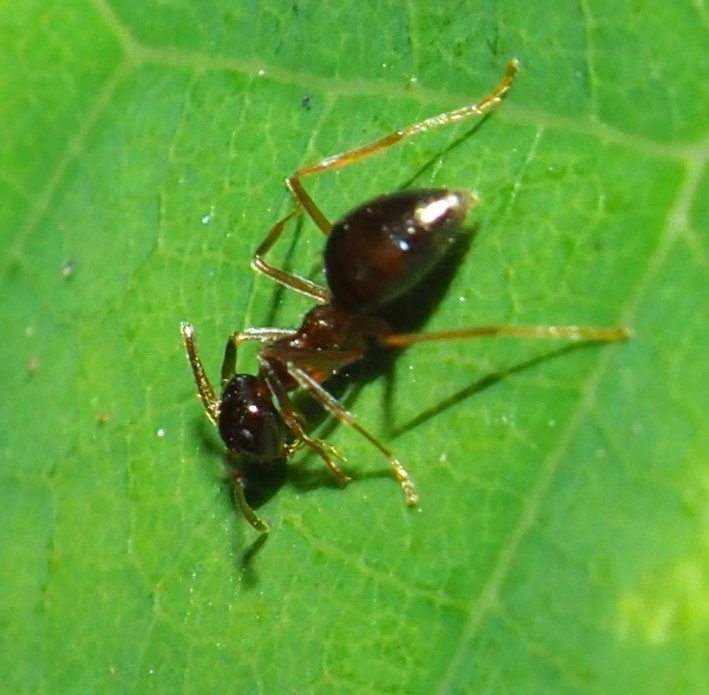
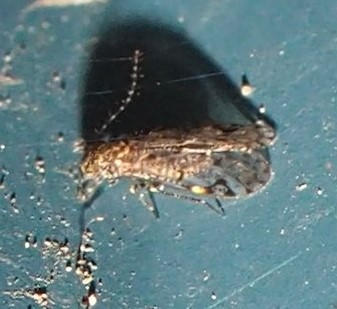
This first Barklouse, one we see very frequently now, is polypsocus corruptus. The camera did an amazing job of getting every hair on its body, which is good since it doesn't have any on its smooth shiny head. Third is another barklouse I haven't seen in a while. It's called a Scaly-winged Barklouse and answers to Echmepteryx hageni. It's got a face that only a mother can love. Or an entomologist.
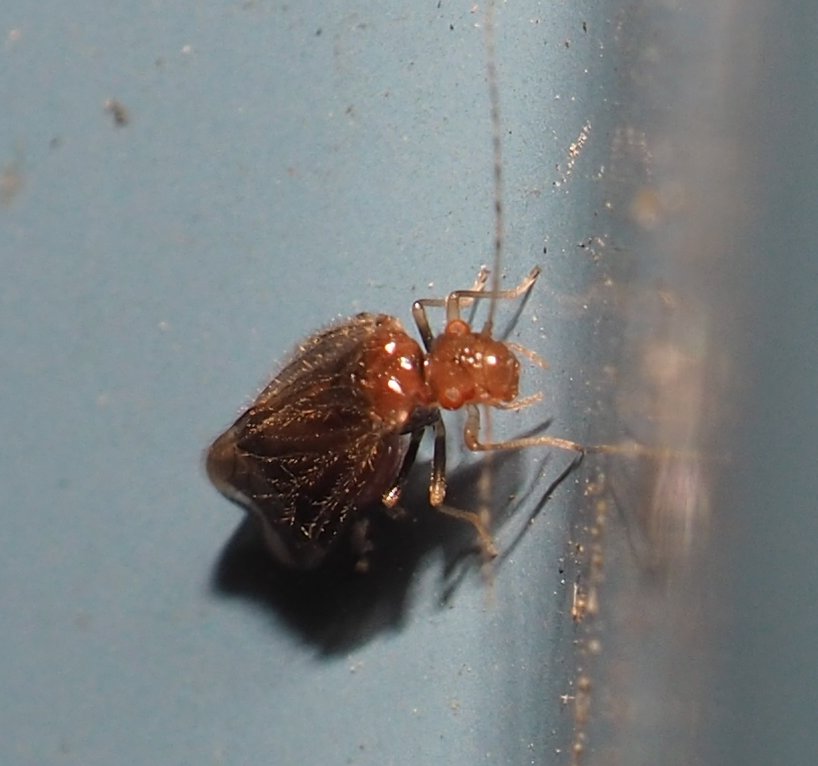
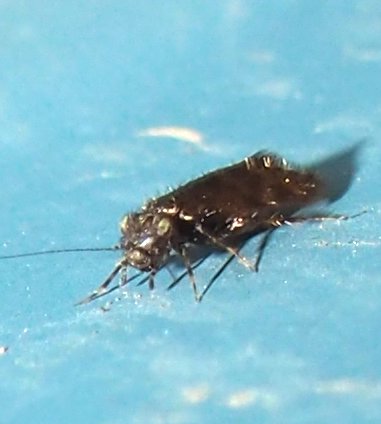
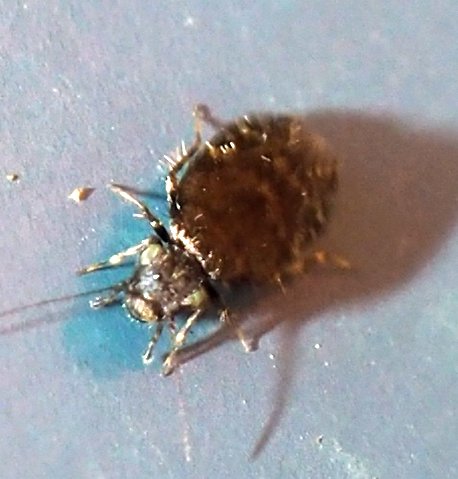
There seem to be a large number of sizes and other characteristic among the Bumblebees. Here is a minuscule Bumble Bee, with a black bum but is NOT a Carpenter Bee. Next is a goodly-sized Bumbler, with beautiful wing veins. I believe it is Common Eastern Bumble Bee. Last is one everyone should love and protect, our oldest friend the Honey Bee(one of the kinds). I hope that you don't mind the asterized background of these pictures.
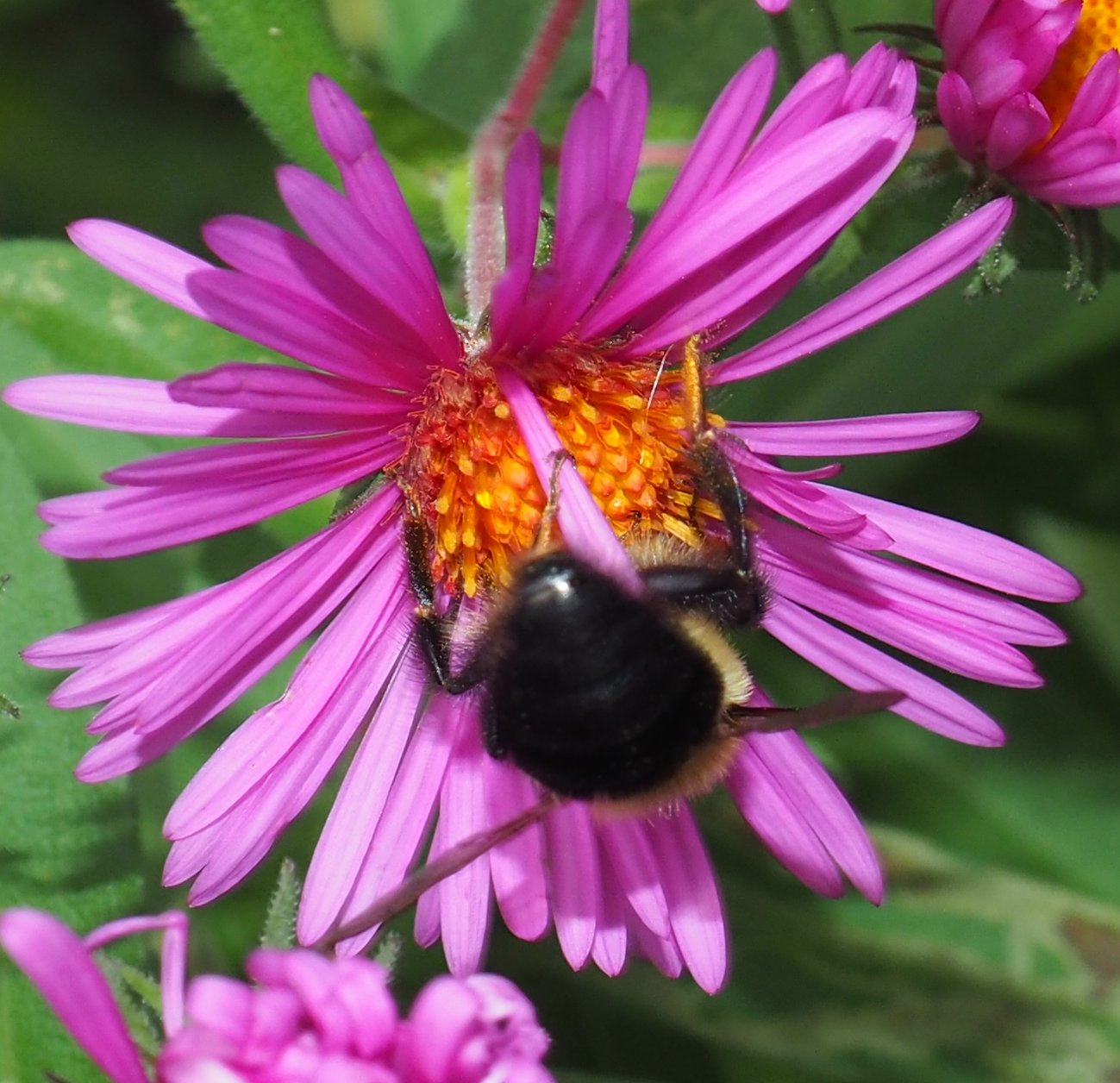
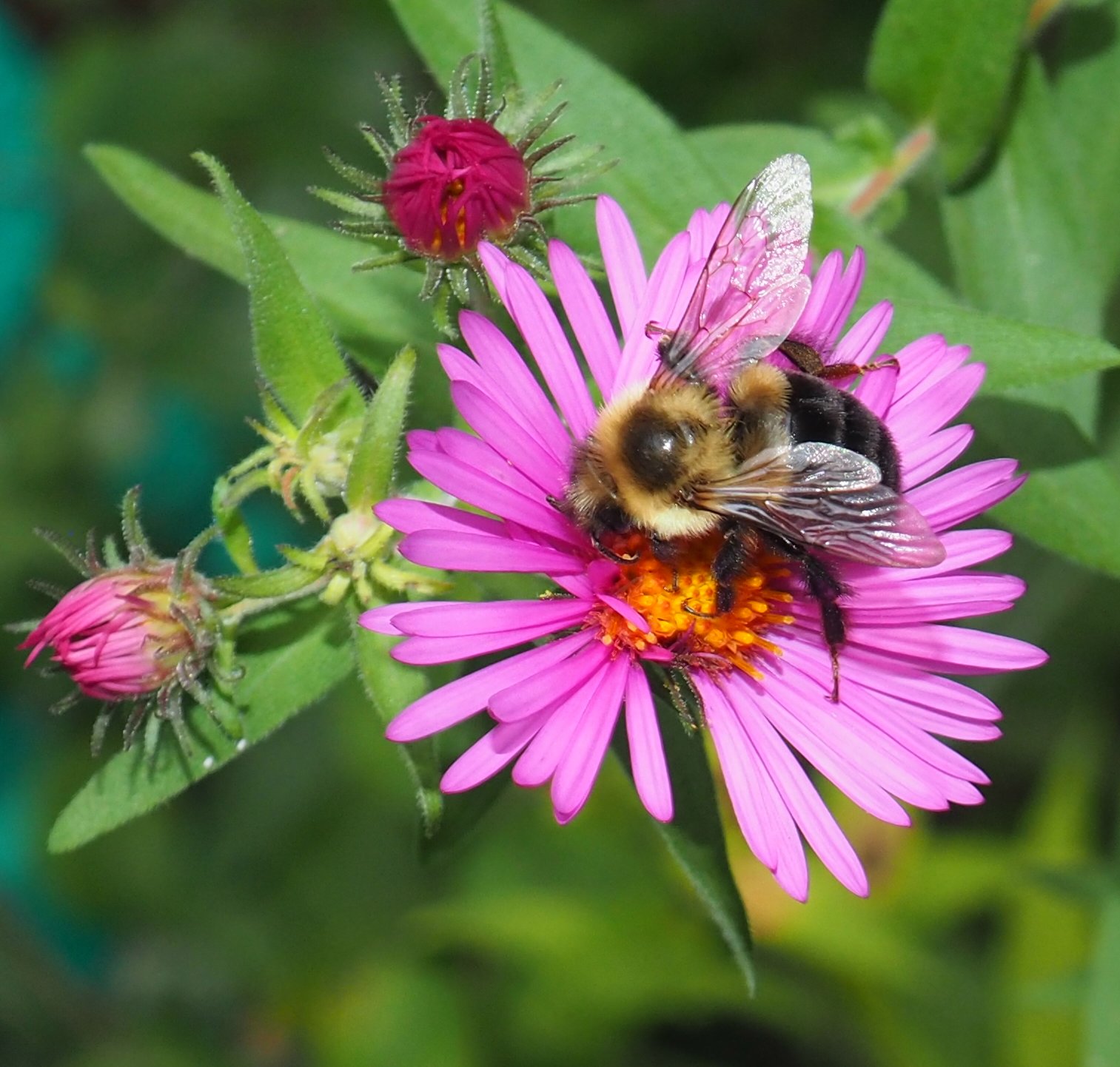
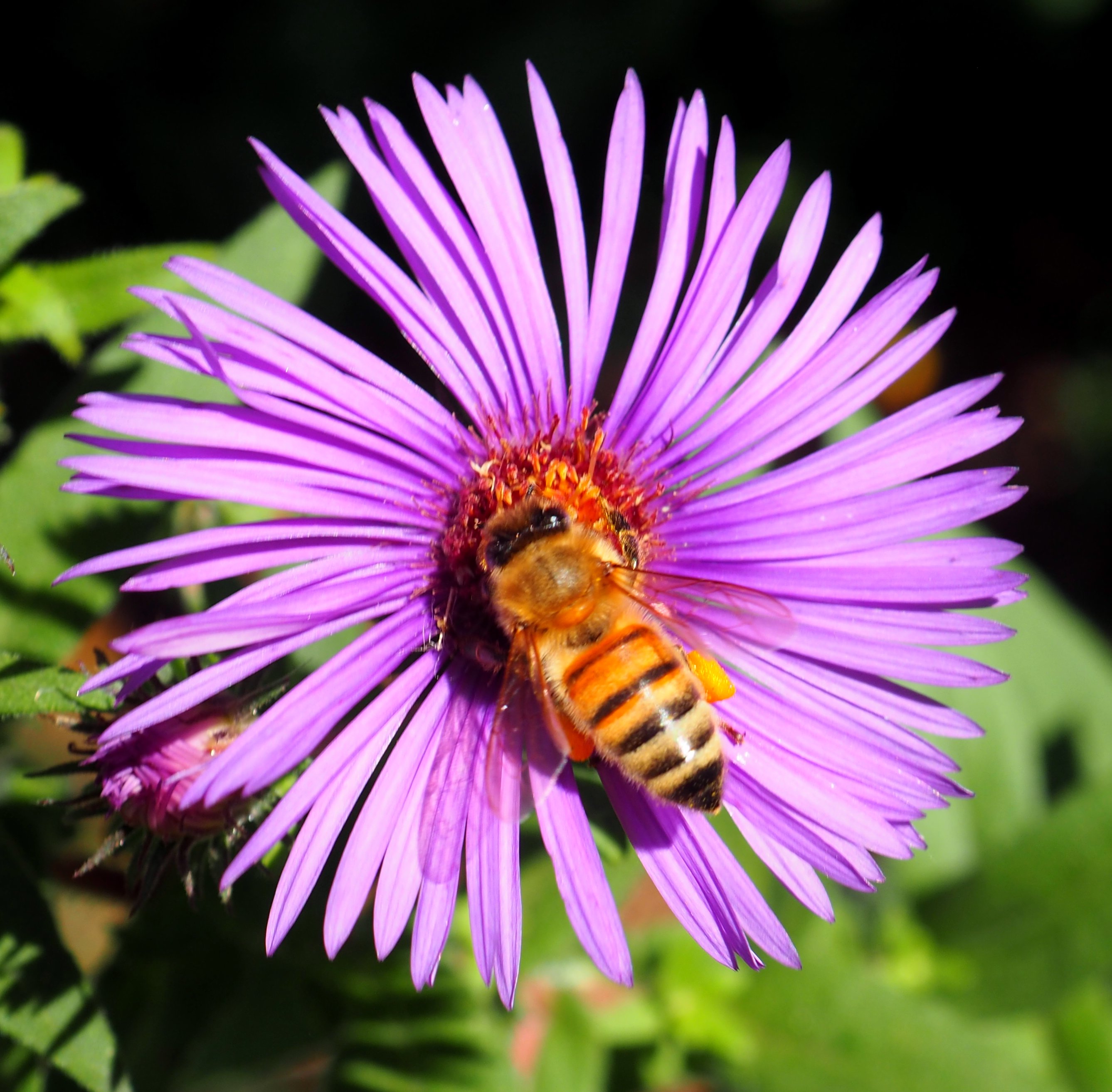
This first bee seems to be a brown bee of some sort. I've been told over and over what the nice little bee with the striped bum is, but you know....I especially like the scoop-shaped wings and the sweet face of this little one. It has a lot of friends at the pub with it.
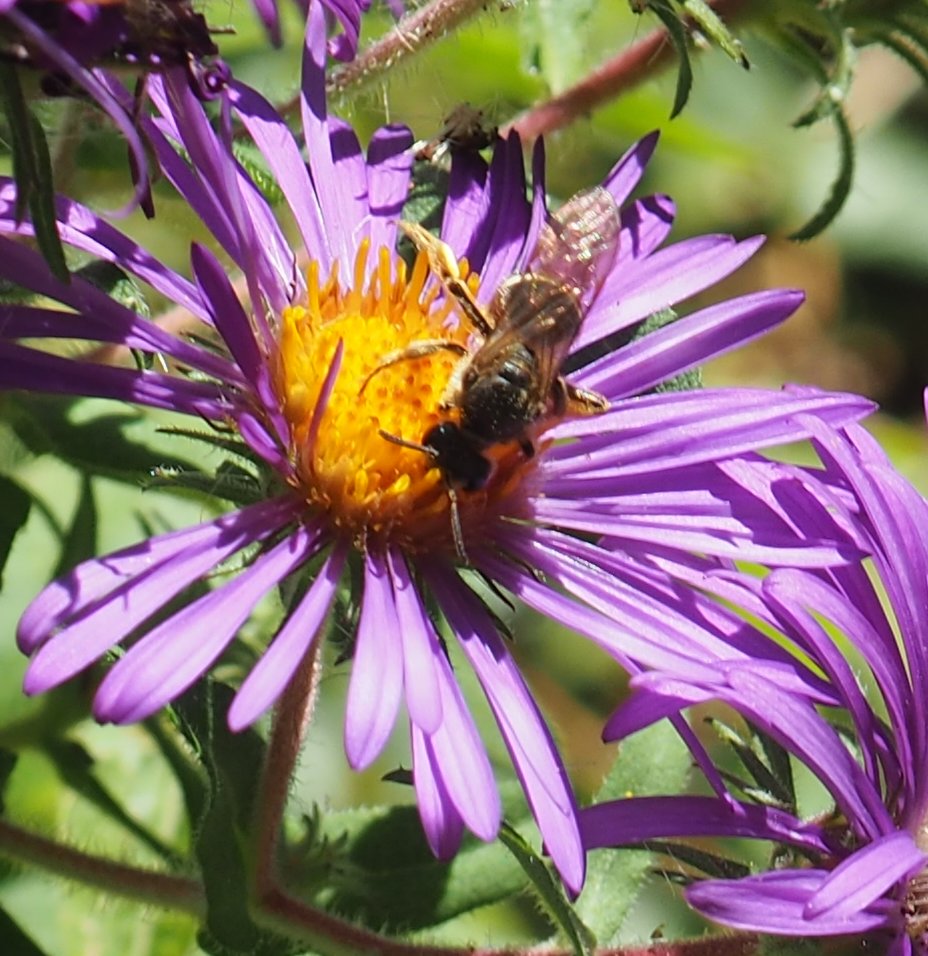
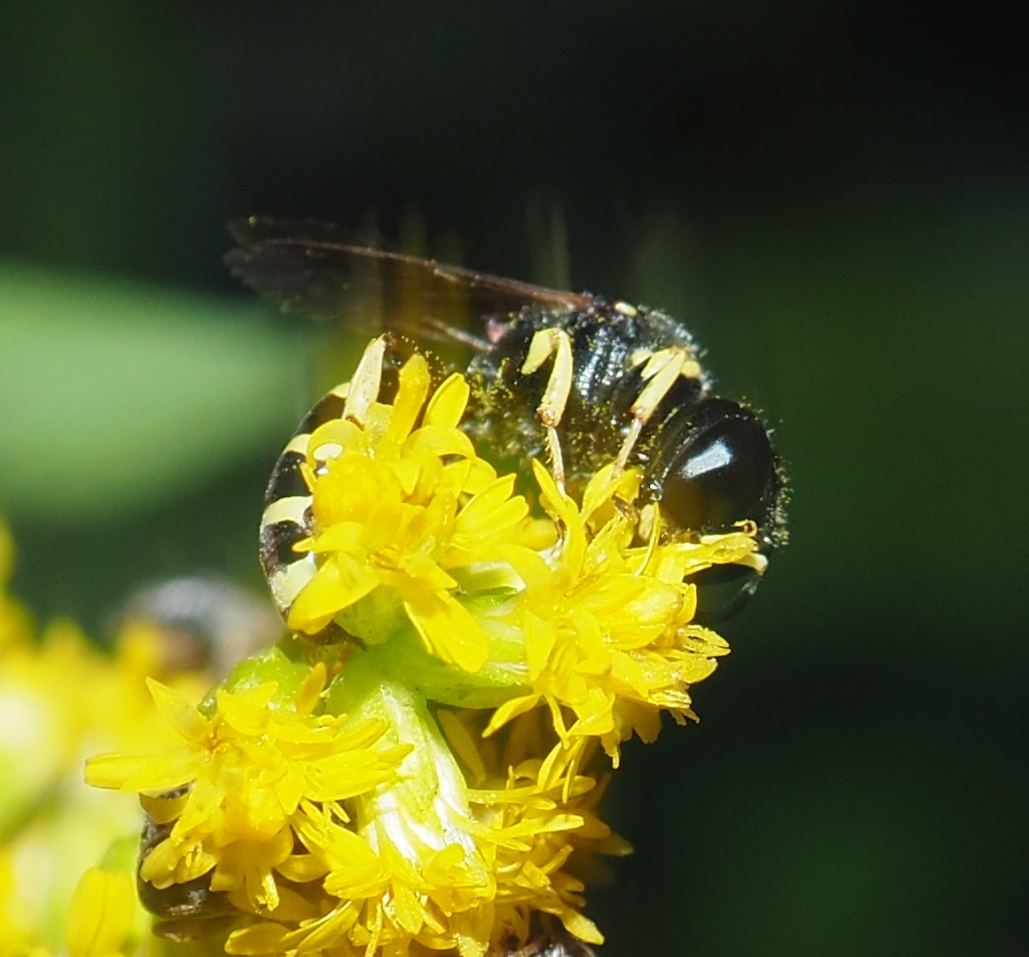
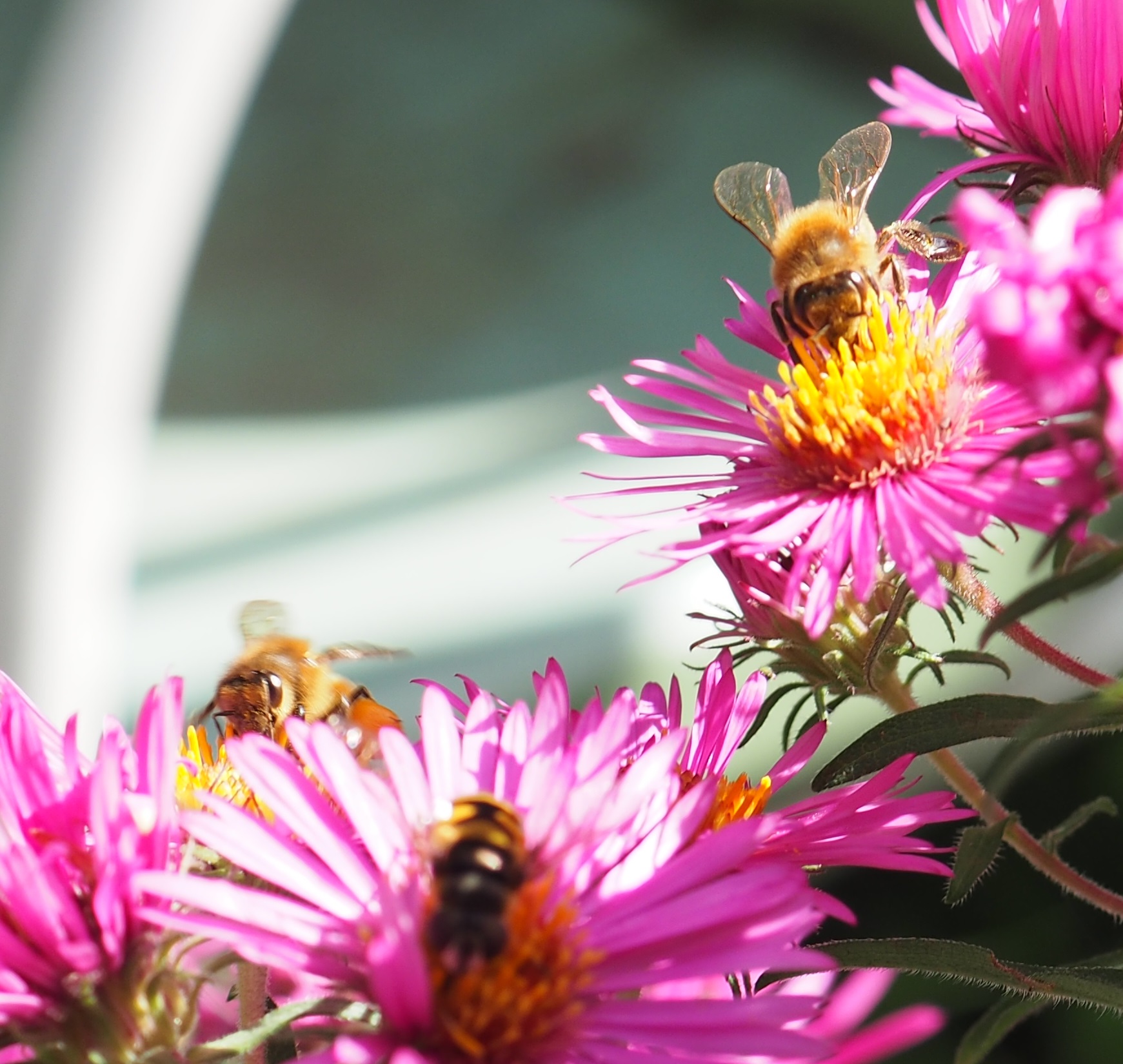
Here you can see a nice Common Eastern Bumblebee in a cluster of Purple Asters, showing, incidentally how the color changes in the light or texture of the curled petals. But then we turn our attention to the Beetles. Second in line is that black beetle with the shiny coat. Third is a Spotted Cucumber Beetle. Lastly, having destroyed the Tiger Lily Plant, the Lily-leaf Beetle seems to have found sustenance in an Aster leaf.


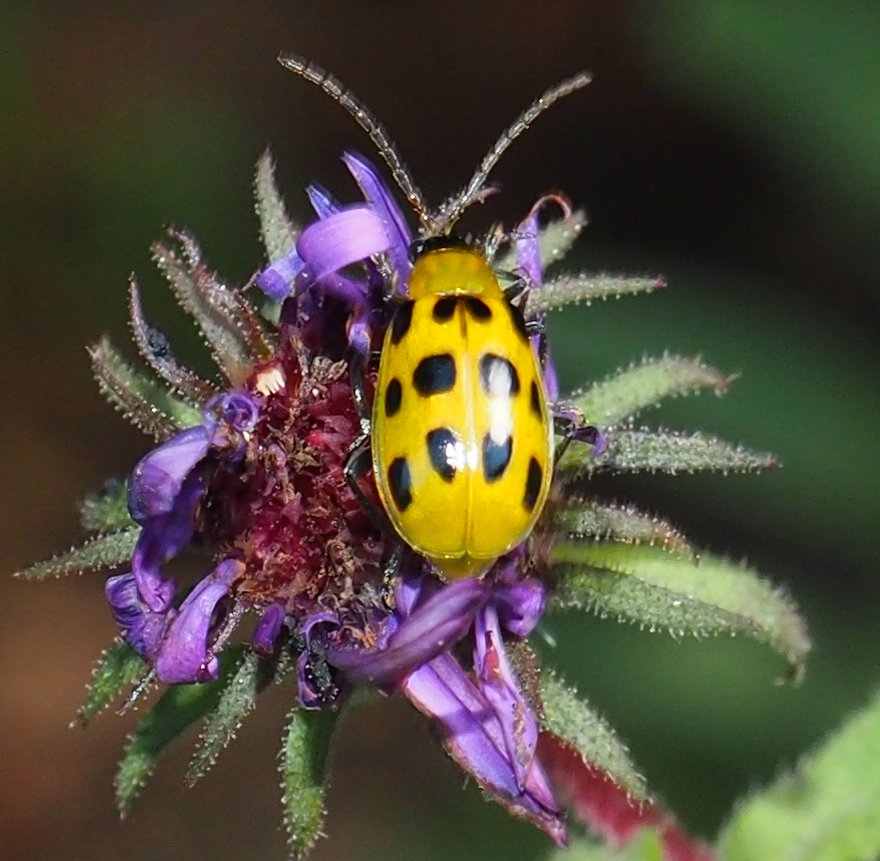
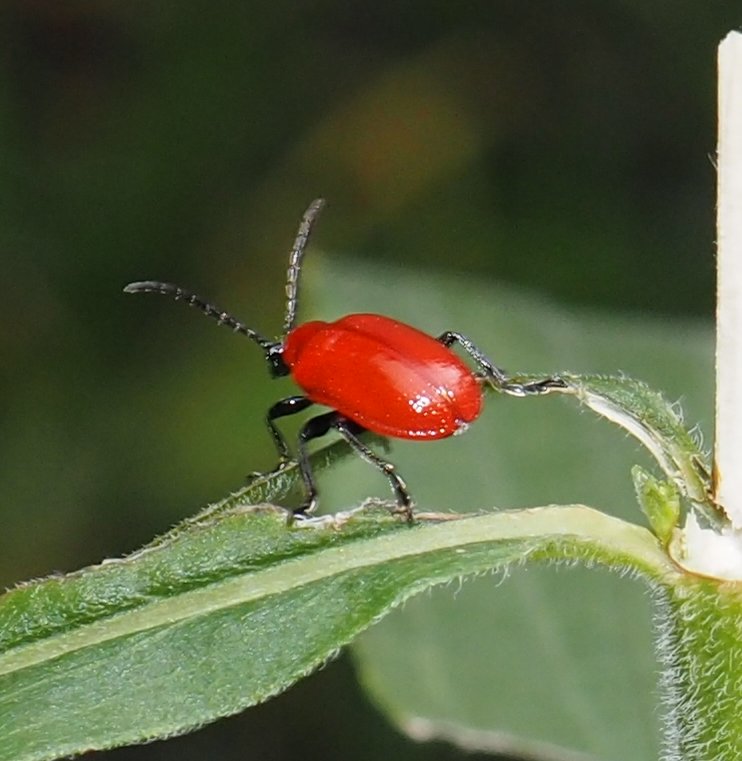
Yes, of course there were Lady Beetles, one the "Who cares how many spots it has, it has the big "W or M" sign on its face, so it must be the Asian Lady beetle". The second has a distinctly different face figure. We can see three spots on one side, but it turns out to be a Seven-spotted Lady Beetle. Third is a small Weevil, seemingly trying to decide to jump or fly off the edge. The fourth creature was in the grass, and I'm guessing it is a "grub" (beetle larva).

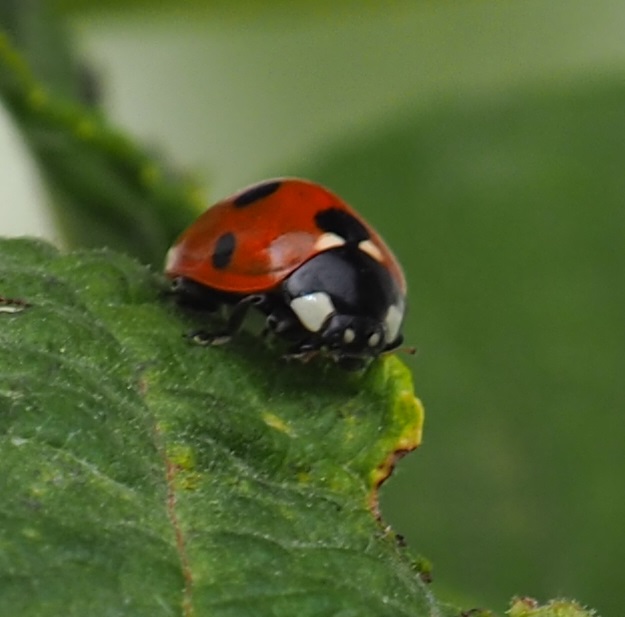
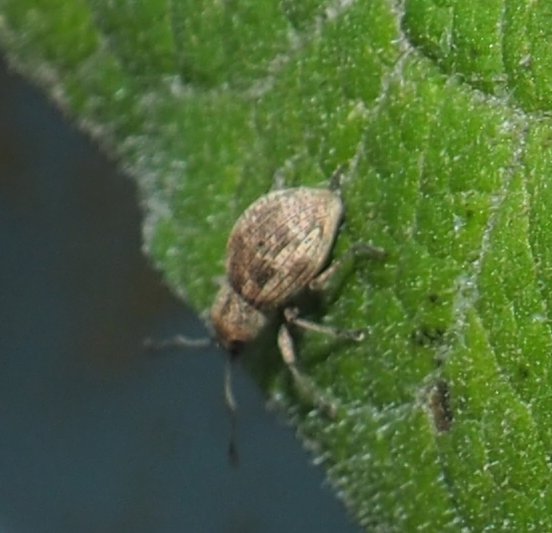
 On to Bugs. A for Assassin Bug, Zelus luridus, as it is said there are no other species under Zelus in Michigan. Can that be? It might be a fun game to look for other species. do you know that for over a month I've only seen nymphs, no adults. The second image is of an old friend, who comes by most years and sometimes has spent a good bit of the fall and into the winter.
I submitted it to iNaturalist and it was identified there by @jeanfrancoisroch. It's the first time I've seen it mating! It's a member of Dirt-colored Seed Bugs. The first Stink Bug looks like what I have been calling "Reddish Stink Bug", but the last one is in fact BMSB (Brown Marmolated Stnk Bug). Boo Hiss. And to think how actually pretty the nymphs are.
On to Bugs. A for Assassin Bug, Zelus luridus, as it is said there are no other species under Zelus in Michigan. Can that be? It might be a fun game to look for other species. do you know that for over a month I've only seen nymphs, no adults. The second image is of an old friend, who comes by most years and sometimes has spent a good bit of the fall and into the winter.
I submitted it to iNaturalist and it was identified there by @jeanfrancoisroch. It's the first time I've seen it mating! It's a member of Dirt-colored Seed Bugs. The first Stink Bug looks like what I have been calling "Reddish Stink Bug", but the last one is in fact BMSB (Brown Marmolated Stnk Bug). Boo Hiss. And to think how actually pretty the nymphs are.
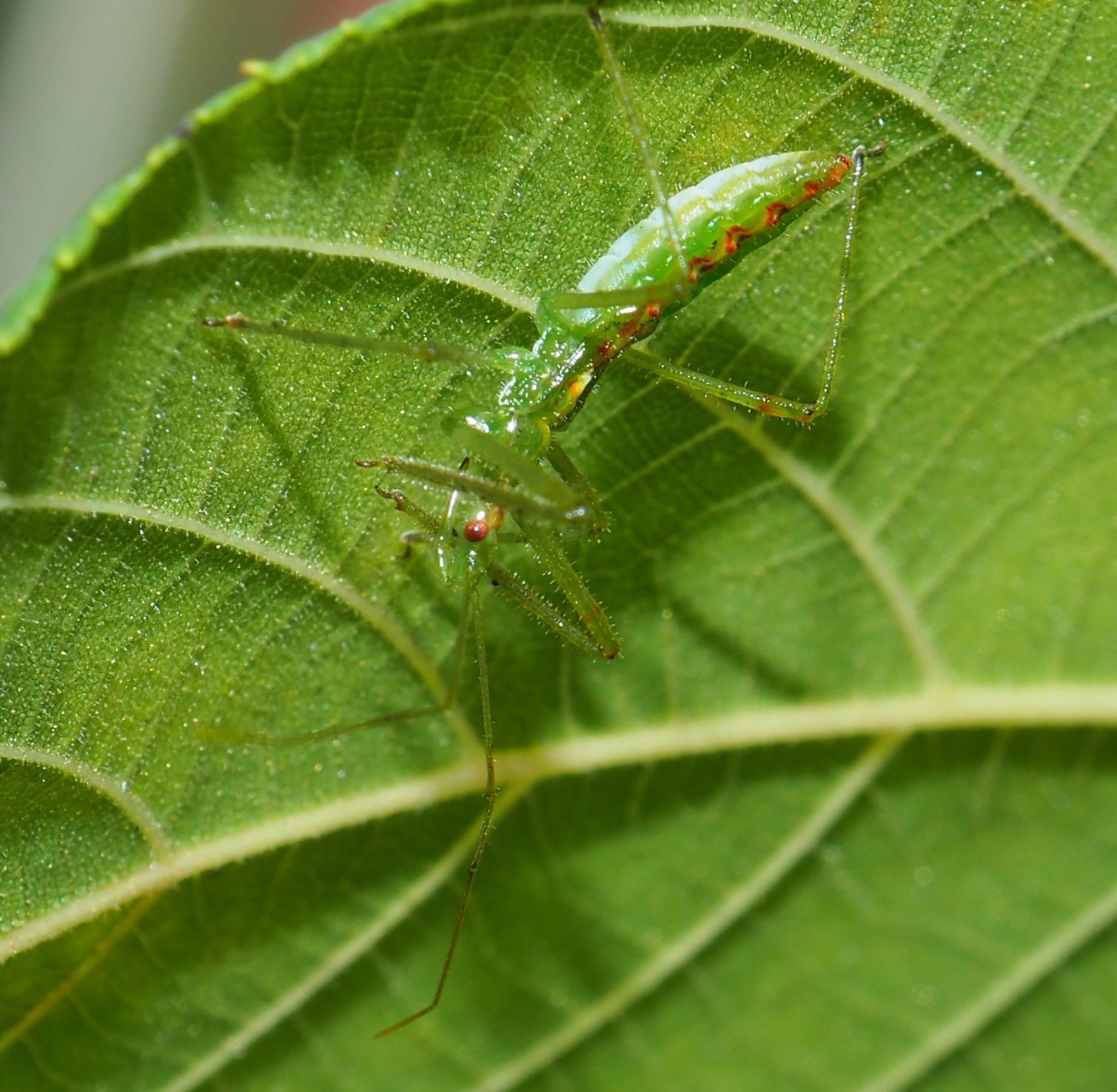
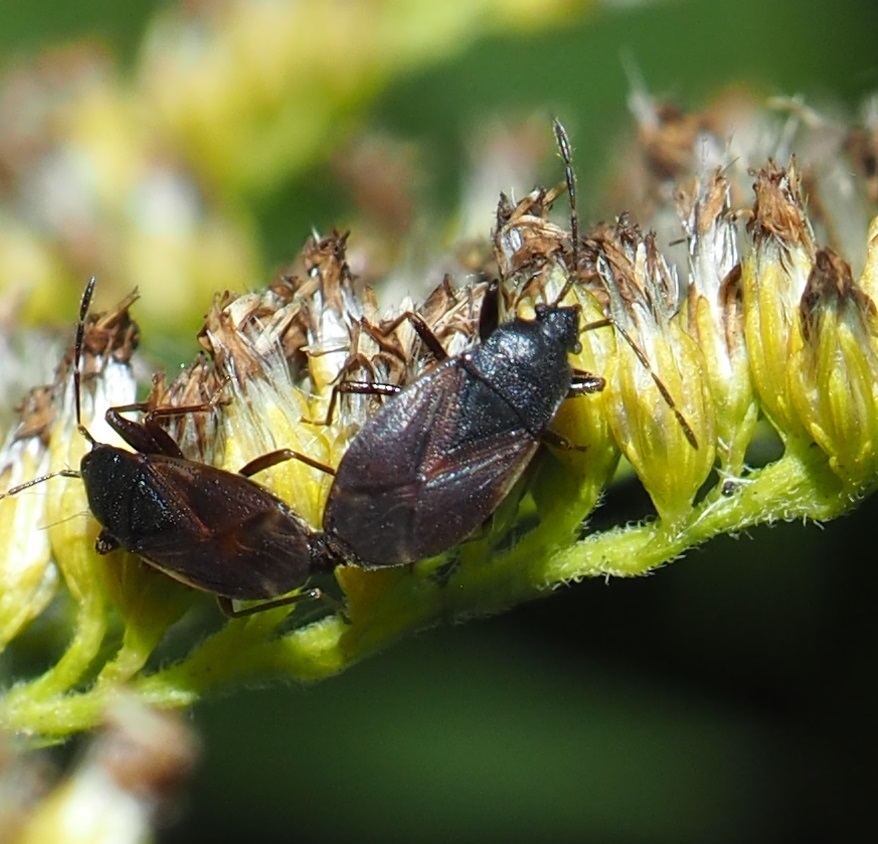
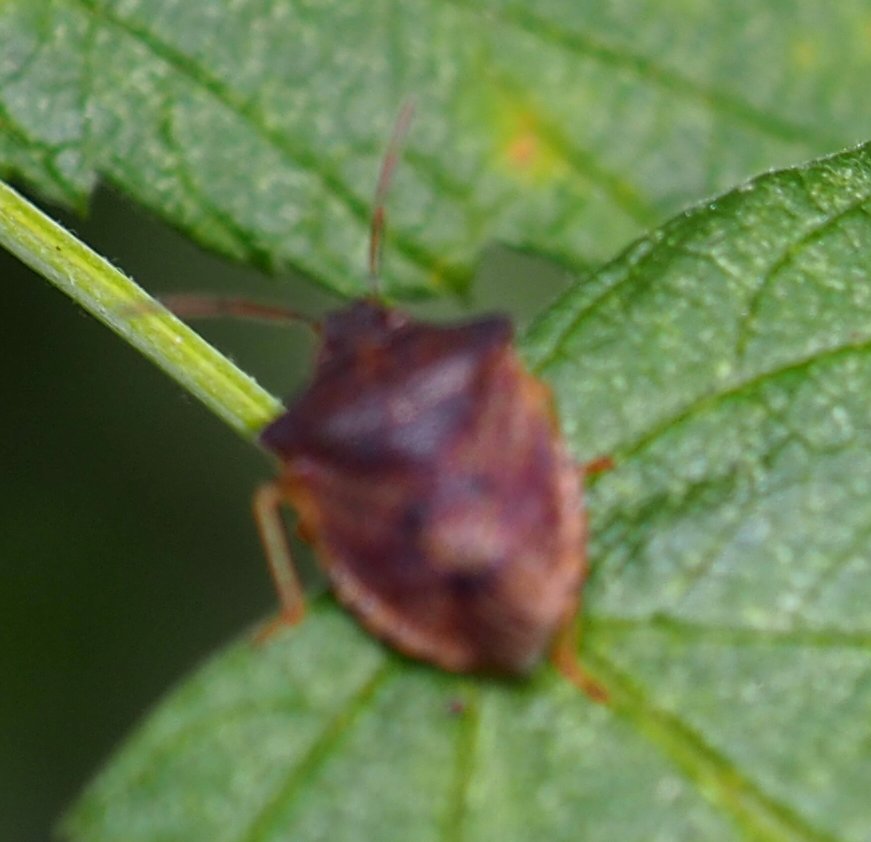
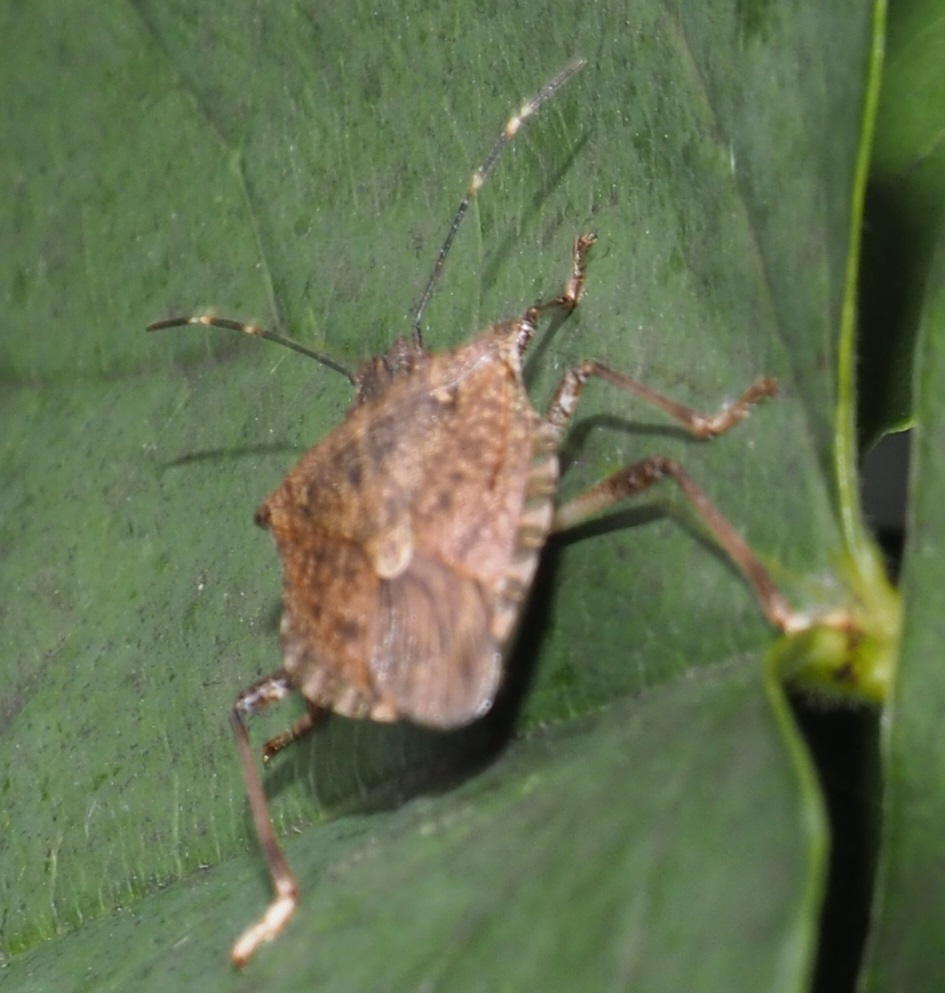
Moving in to a few leafhoppers, here is a mystery bug. Being a bit dyslexic, I can never really remember the differences among psyllids, aphids, and barklice. So I can't even start to ID this one. Sorry! So here is a real leafhopper: white with reddish markings but NOT of genus Eratoneura. Third is a leafhopper with a fairly easily memorized pattern, the operant words here being "fairly easily memorized pattern". It IS of genus Eratoneura, species Erythroneura aclys. The fourth I know I've seen somewhere in the past couple of months, but where, oh where?
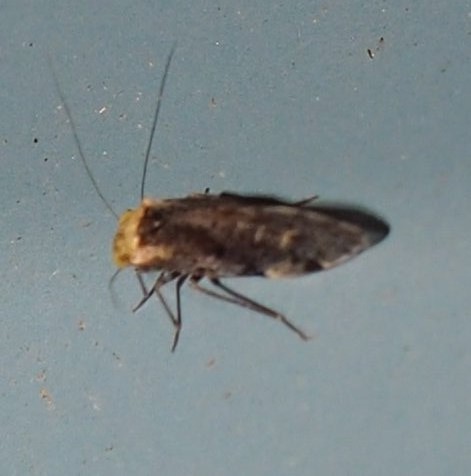
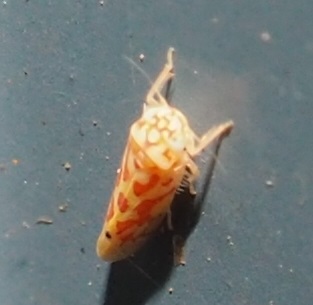
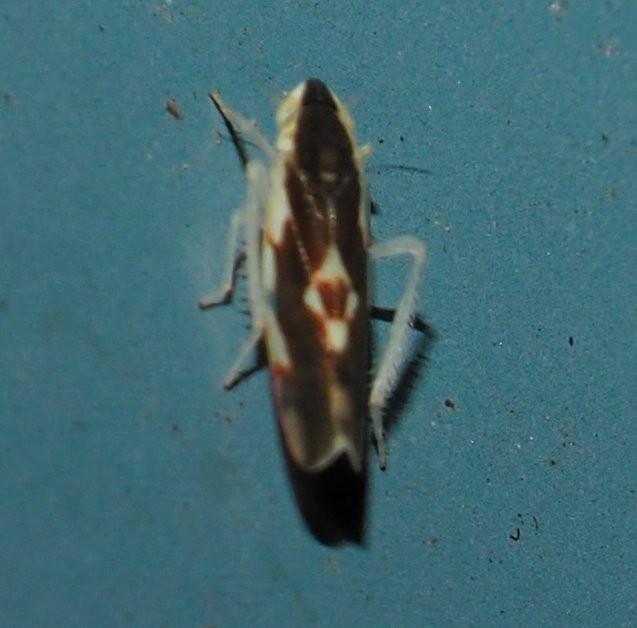
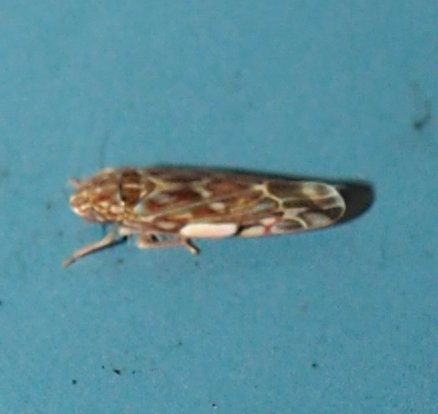
This first bug is the nymph of one of the many Mirid Plant Bugs, taken in October 2015. (And I note that that it is found in a just-spent bloom of a brightly colored aster.) So why am I showing it to you now? I've seen a few kinds of Plant Bugs this summer that I hadn't pondered enough earlier, I think. Bug #2 is said to be a Scentless Plant Bug Nymph. Well, I started to peel my eyeballs to see if I could find one at an earlier or later stage of life. The blooming or past blooming Asters turned out to be a fruitful place to start. Picture 3 (taken on 9/26/2018) looks to be a close match to the pictures of October 2015. What wings it has turned out are either green or clear (or pink as in picture 4 taken 9/23/2018). These are presumably different individuals from each other. Alas, the last picture I have of one of those nymphs is this row's last image, which seems to show two pinkish worm-like creatures finding some way to ingest the juices of one of those healthy-looking nymphs. Nature is sometimes red in, you know, tooth and claw. You get so interested in a series of photos of a nymph growing in leaps and bounds (I don't even have to claw my way through any books and these stupid metaphors leap into my head). But not to worry, that last bug may not have to be a further development of the first four images. Still, maybe it doesn't matter, all of us are on this one-way journey and we don't know our own stop. Wow, take a break.
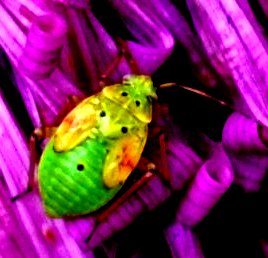
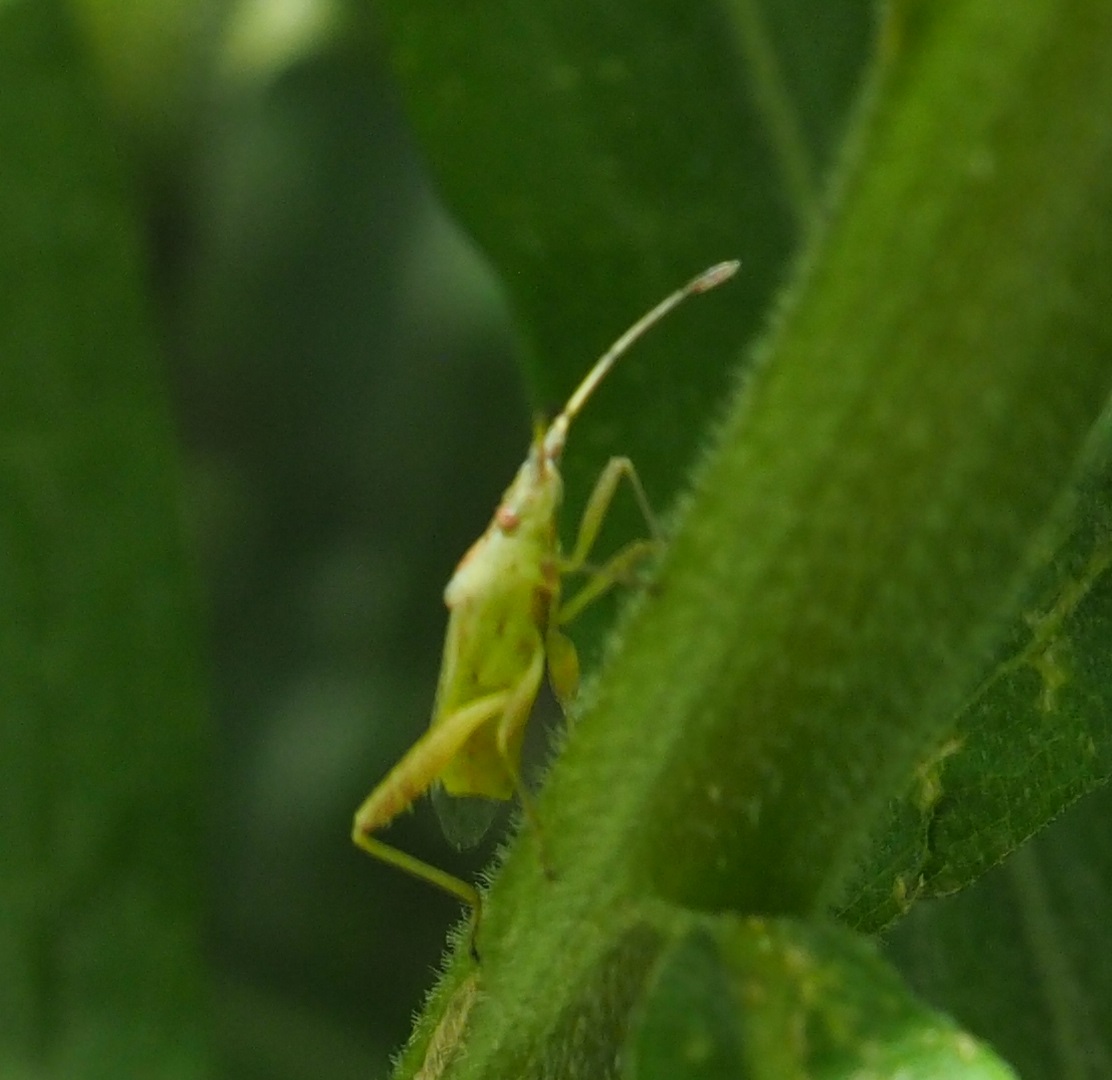

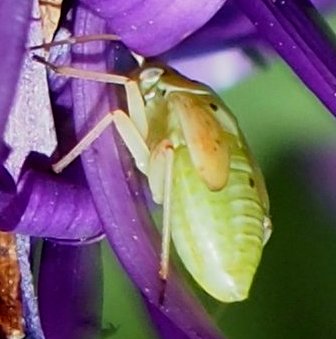
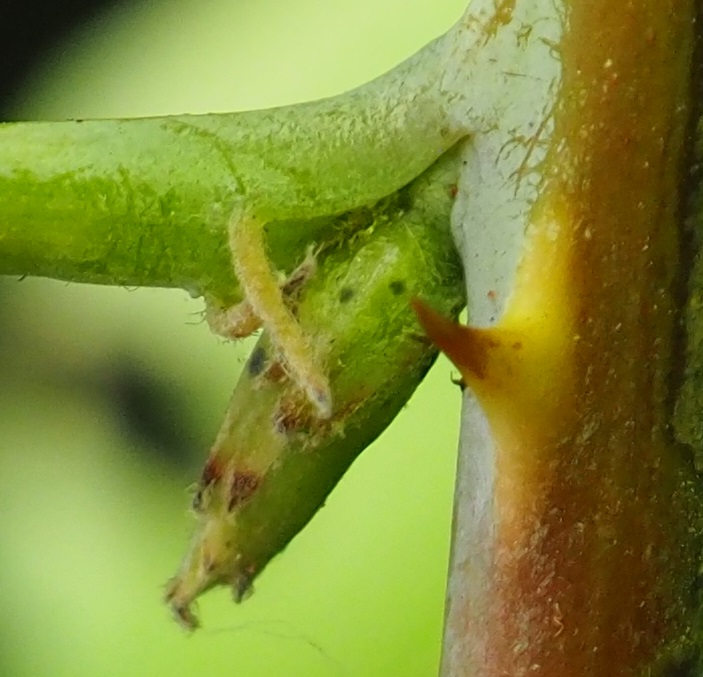
First up: another of a larger and larger number of unknown bugs. Next: a creature that I cannot even place as to order. It seems to have a back leg of grasshopper, cricket, or katydid type. Next: the stealth missile of flydom; and last, what seems to be a fly of some secret type.

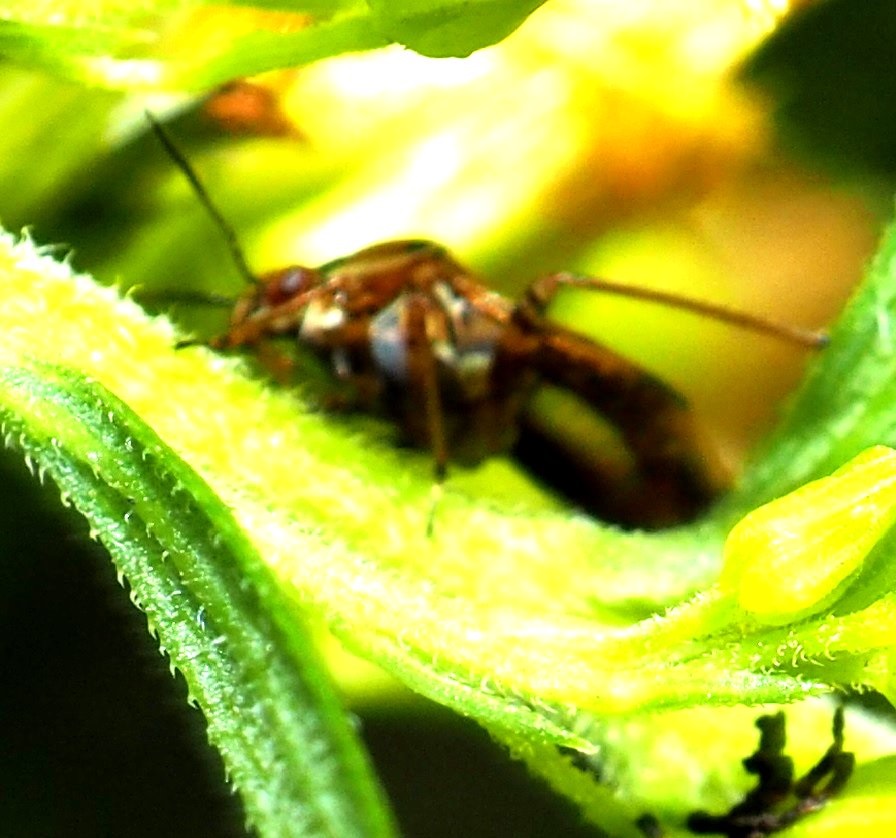

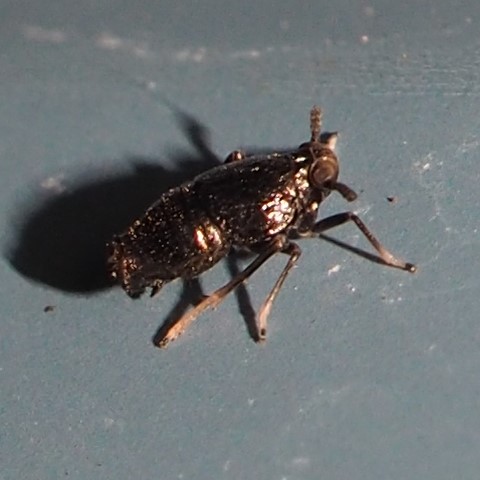
Now back to the hover flies. First are two different incarnations of Toxomerus geminatus. Note how different their respective abdominal patterns are. And yet they are T. geminatus (I spent a good bit of time trying to differentiate their patterns from some other species of genus T.) If you recall from last week, I was apologizing for missing a shot of Helophilus fasciatus, who, as its name "helophilus" (Sun worshipper) implies, it loves especially to flit about the pond, and the female will actually dip her tail over and over into the water, thus laying her eggs, who, as they grow to flies, eat dead matter, thus performing the duty of sanitation engineer. One big sentence, huh? I haven't checked the sex of this one but it did fly and flop, fly and flop, sitting still on the rocks around the pond. So I'm guessing female. Another way to judge sex: In many of the Hover Flies, Looking straight into the face, you'll see that the male's eyes run together in the center of the face, but the females' have a wider strip between. We did bag one new one ("new" meaning I haven't seen it in a couple of years - yep - it avoided us in 2017. You have to remember that 2017 was so dry that the Aster crop fizzled very quickly) fly. So, when you look right down at this last one, it seems to be all black but looking at the thorax, it is lightly striped with silver lines. It is Rhingia nasica.
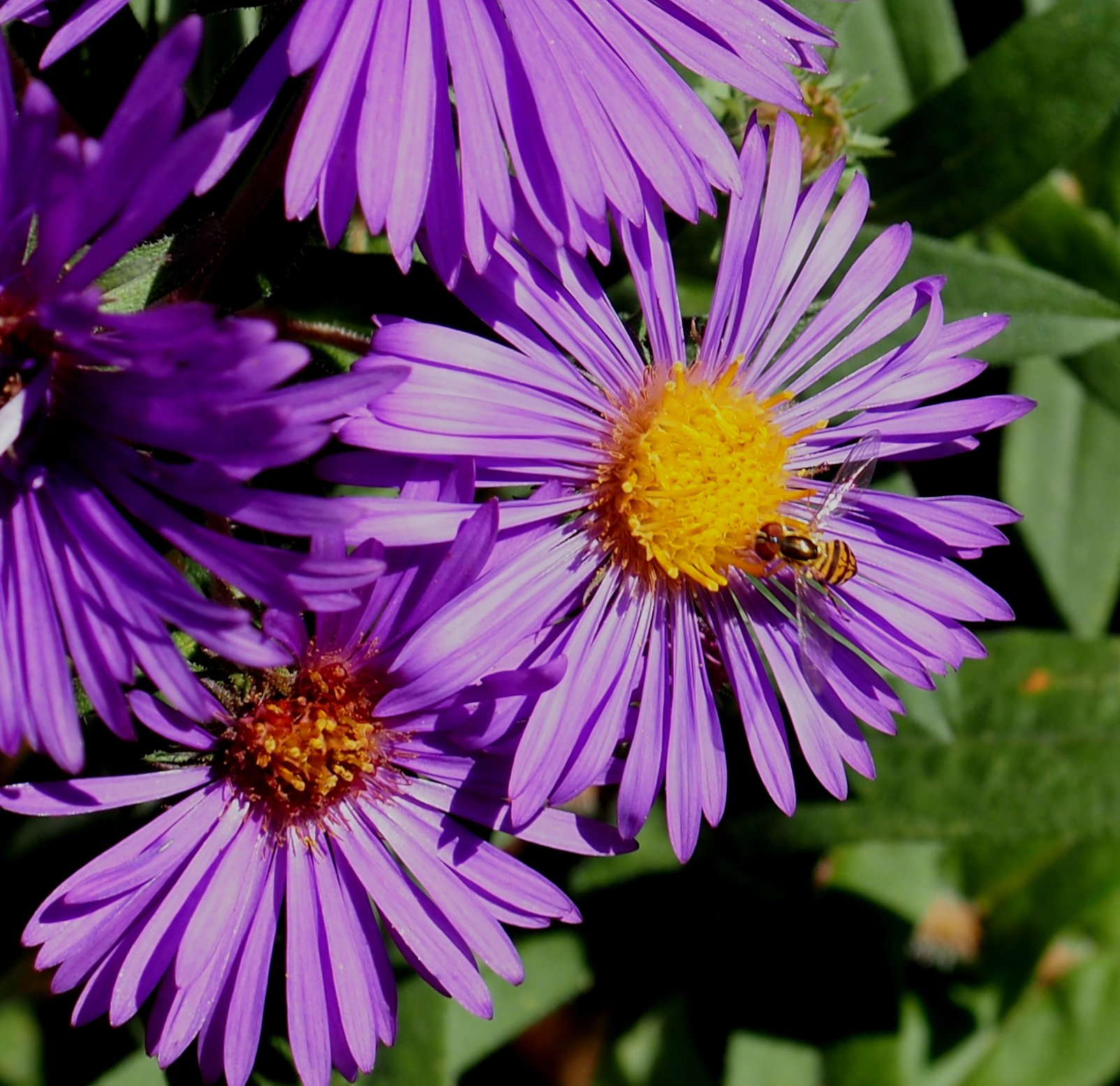
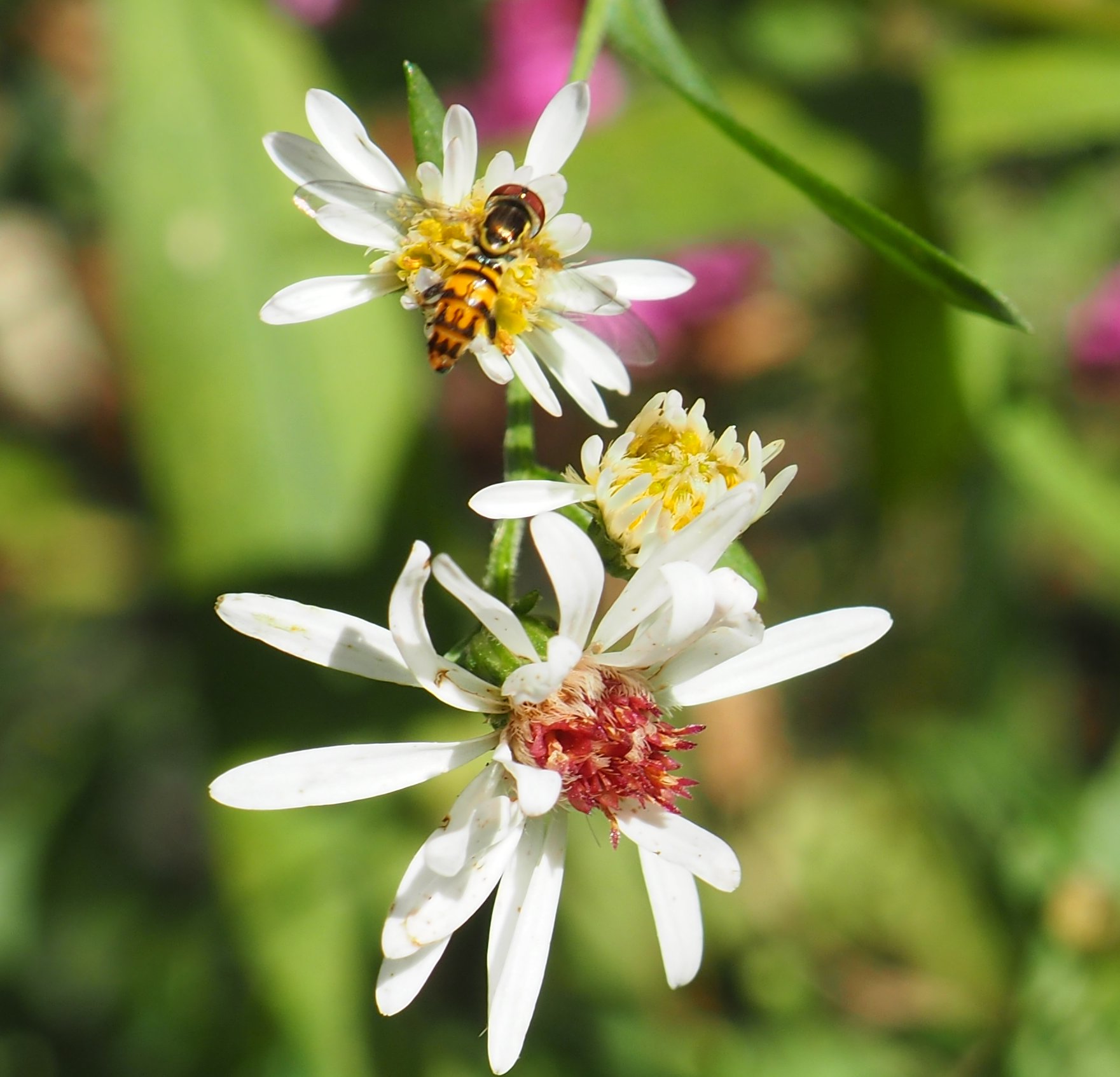
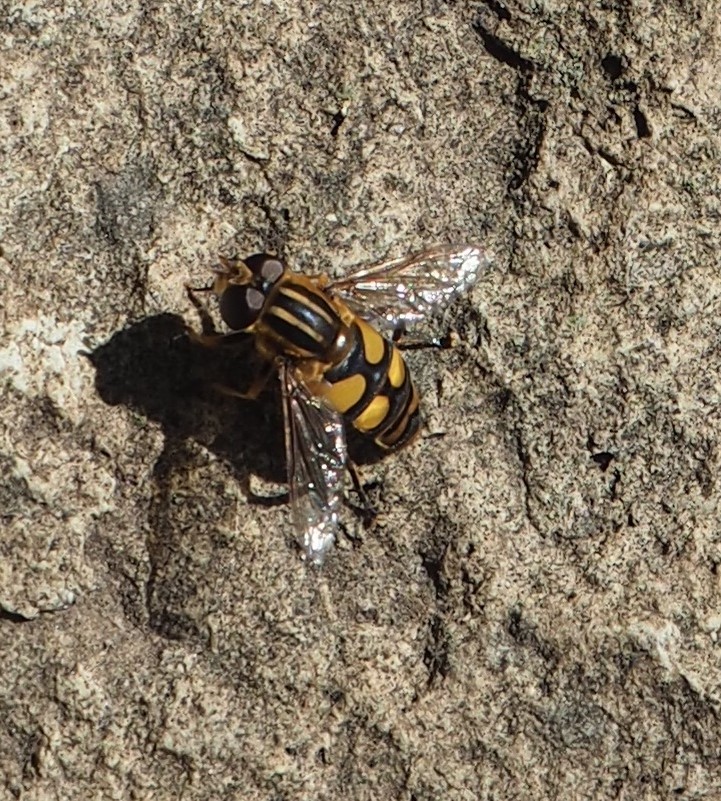
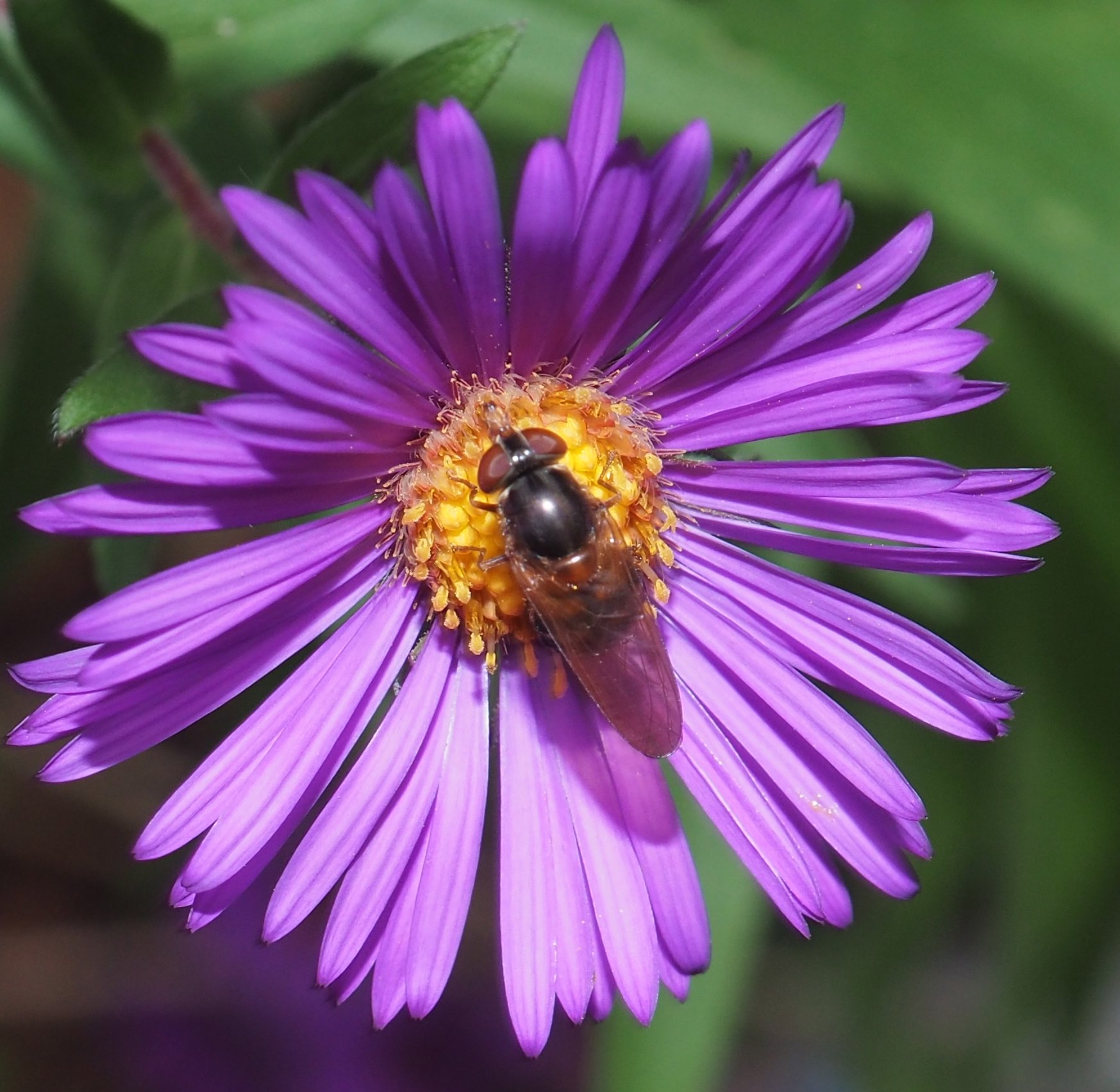
We voyeurs got very lucky this week. We have a second pair of critters mating. These are three images of Fungus Gnats linked together in deep affection, Sheila. By the way, Fungus Gnats seem to have more leg spikes than their easily-confused friends, the Gall Midges. By the way, I've added the names of two of my colleagues who enjoy discussing such things - can you persons tell which is the male in these pictures?
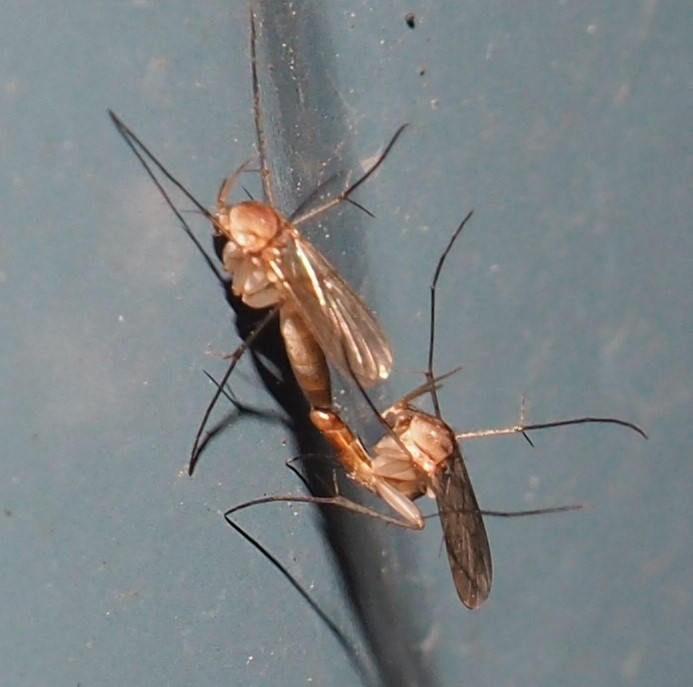
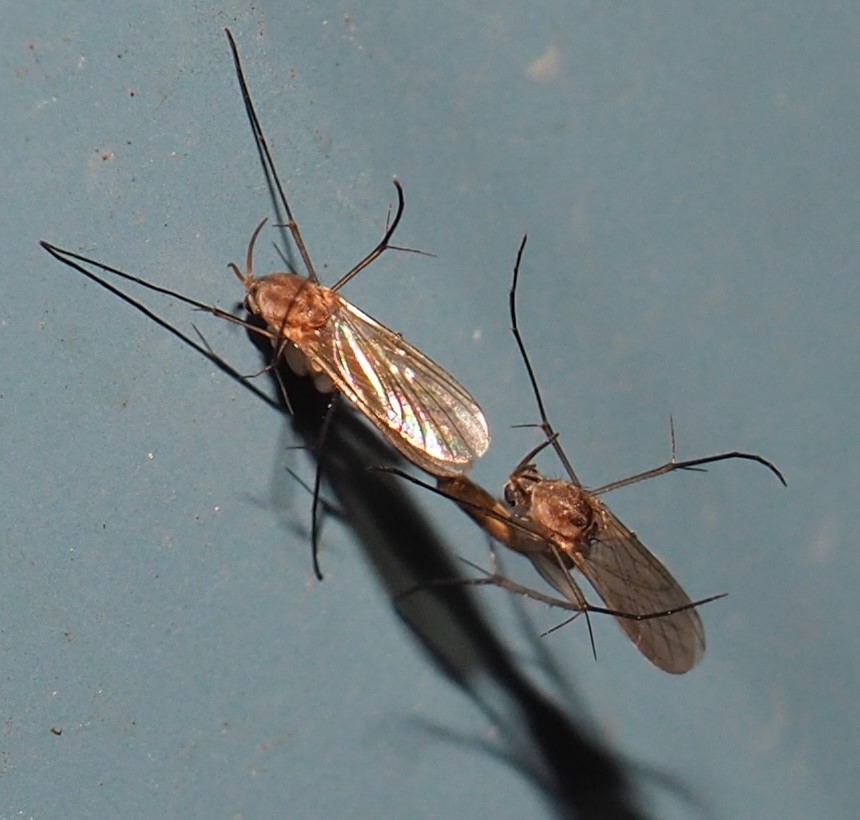

First up here, a glutted and cloyed mosquito, presumably full of good old Irish O+. Second, a mystery black skinny fly. Third, an oft-seen little fly with the gorgeous blue, gold and red. Fourth, yet another Moth Fly, with which the world seems to be brimming these days. And fifth, one of those many many orange flies, of which I have no great expertise but I know orange when I see it.
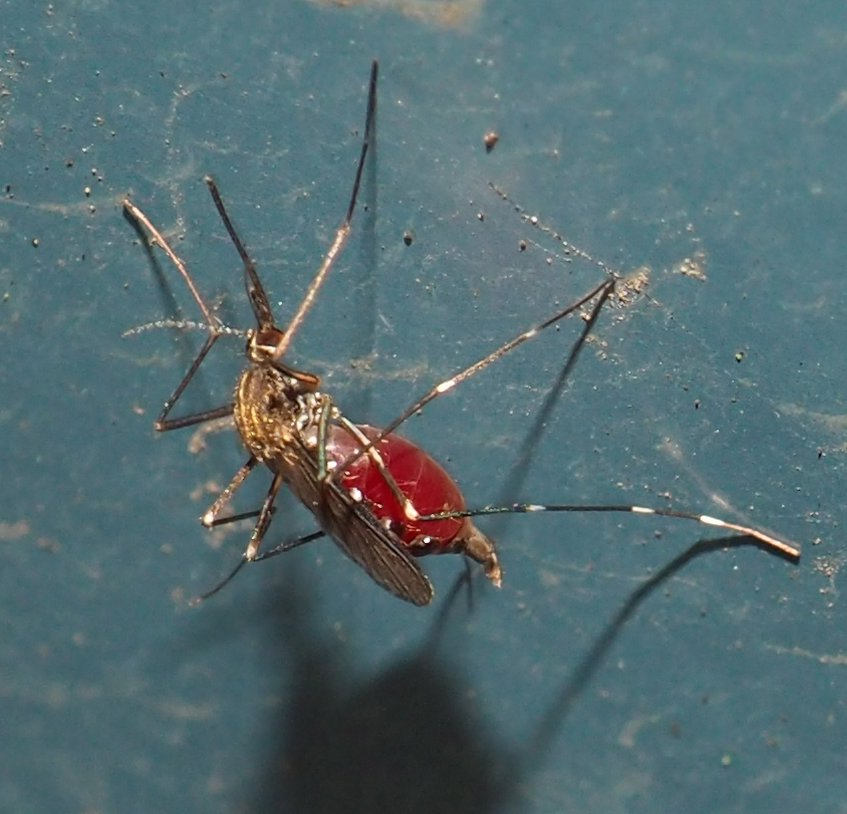
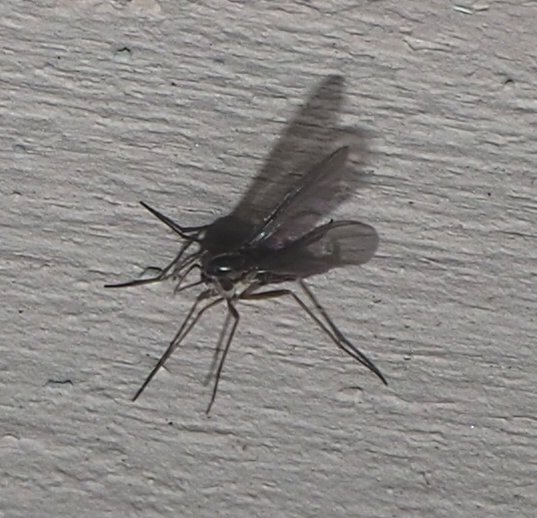
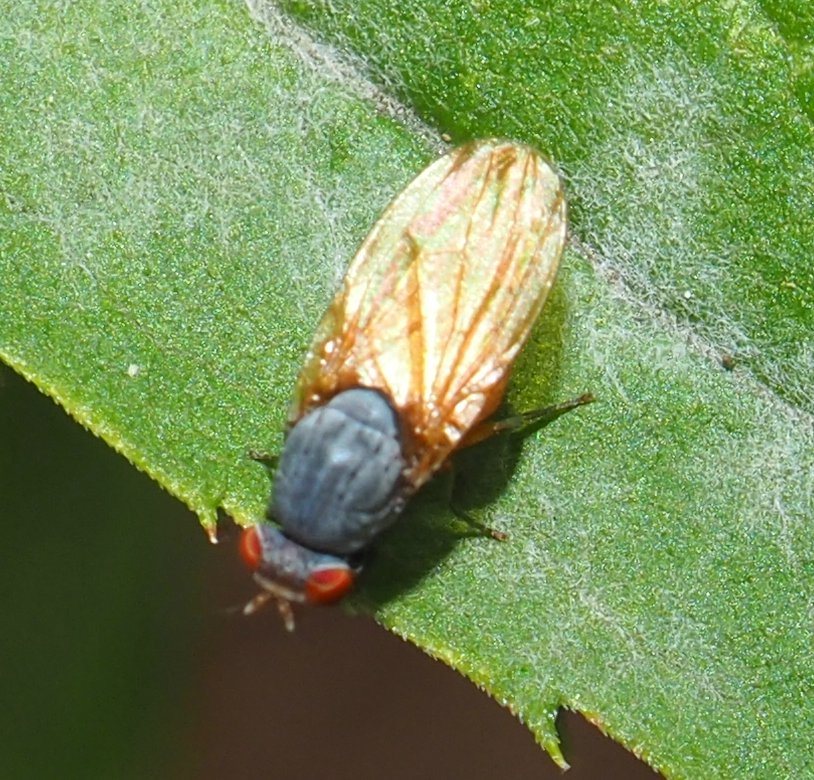
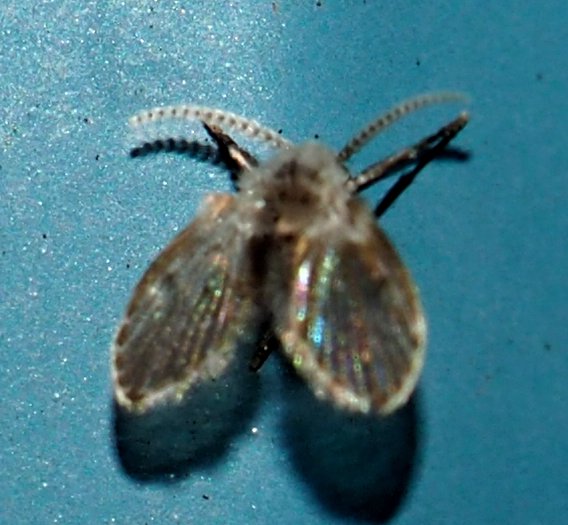
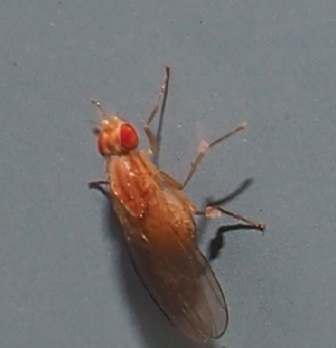
Here is my yard's favorite fly: the Root-maggot Fly. It's got such a pretty face but what a name for a baby. The second one is so tiny I could hardly see it - that's the Goldenrod it's hanging from. Third is another orangish fly, but look at the profile view (fourth image). That's the same fly.
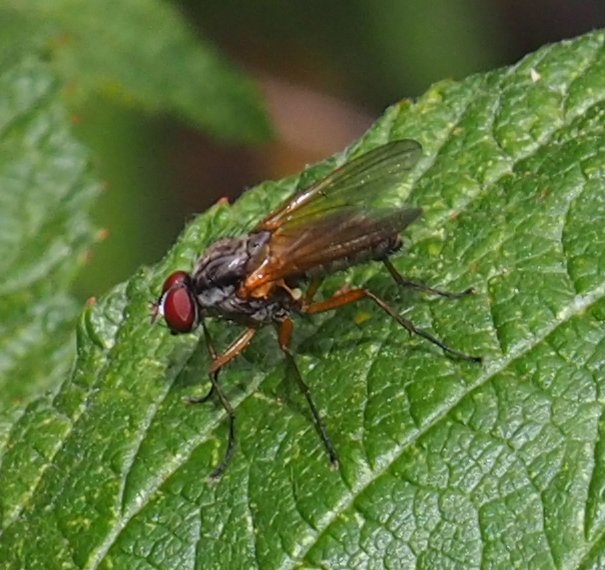
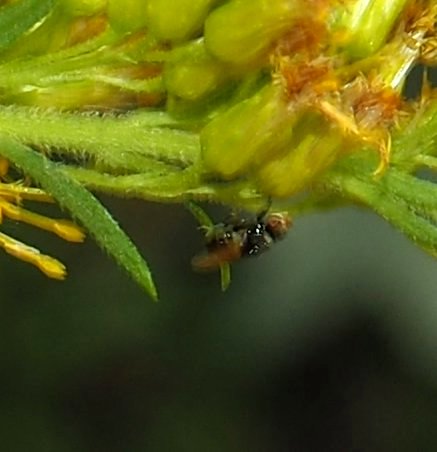
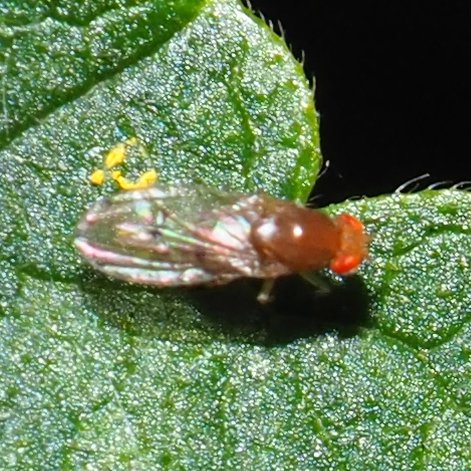
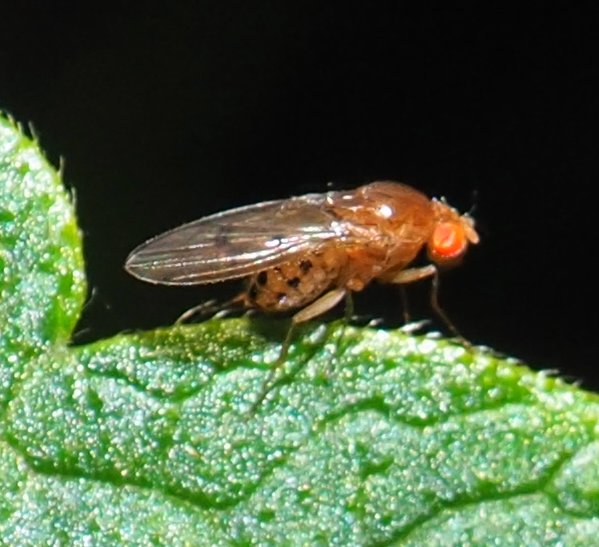
My favorite Amphibian, the Green Frog that has been hanging around here for some time now (maybe 2 months). This week I didn't hear it talk to me like last week. But look again at that smile. I didn't mean for it to come out like this, but here are two galls: one on wild grapevine, and one on an oak stem that resembles a Hershey's Kiss. And finally, a reprise of the ants enjoying their relationship with the red gall. I can't remember the relationship, but we did discuss it in one of the not-long-past blogs. Oh- in picture #4, is that thing to the left of the red gall a planthopper, or a treehopper, or none of the above?
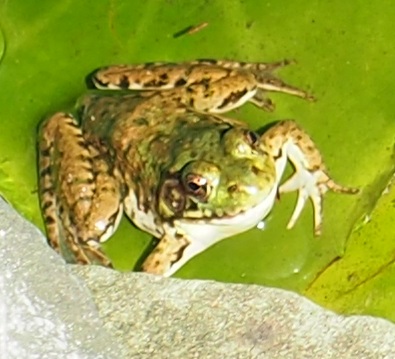
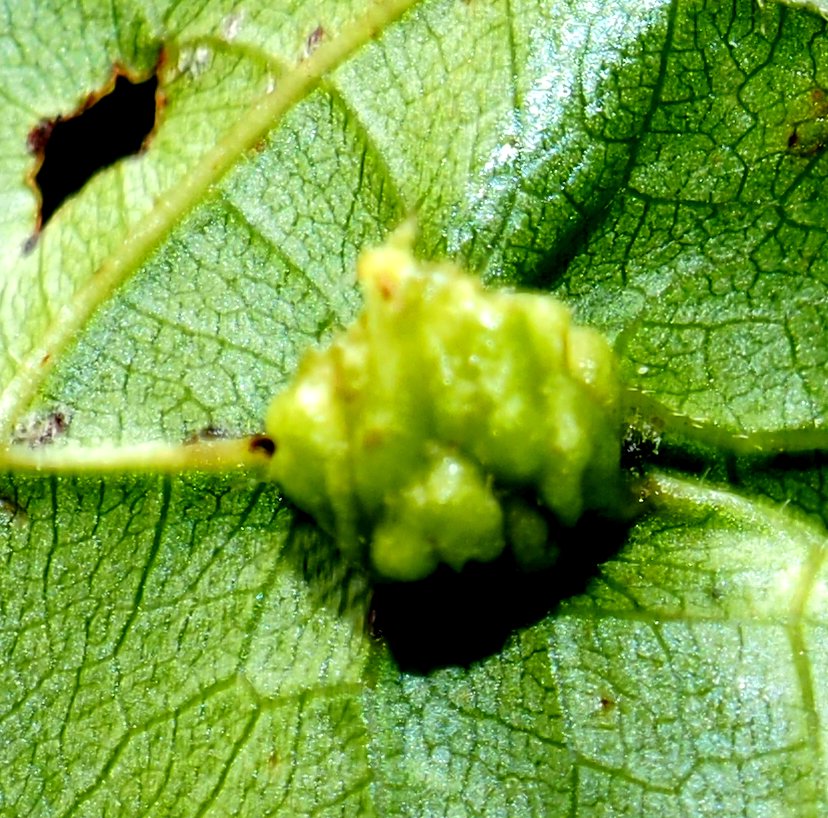
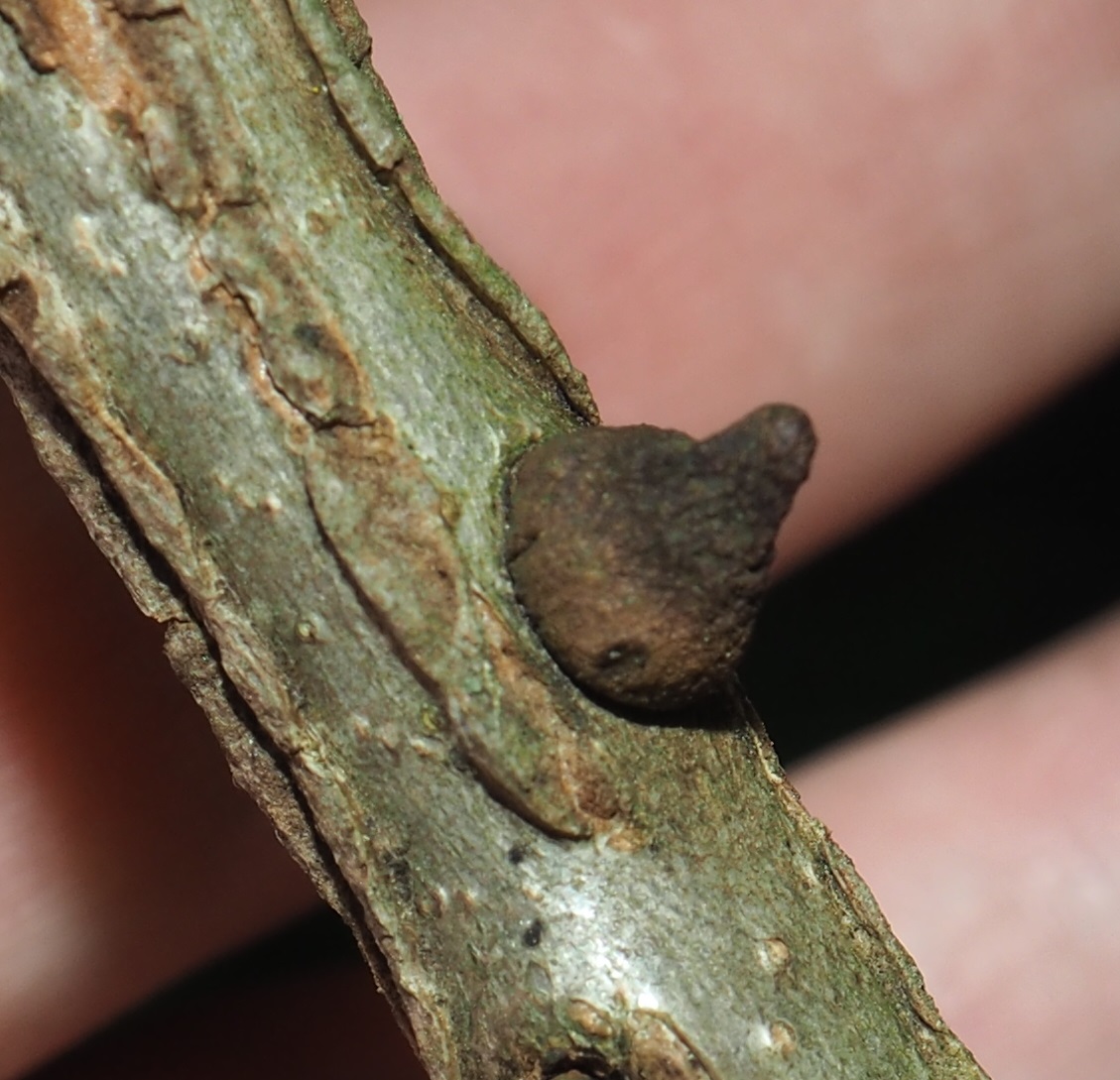
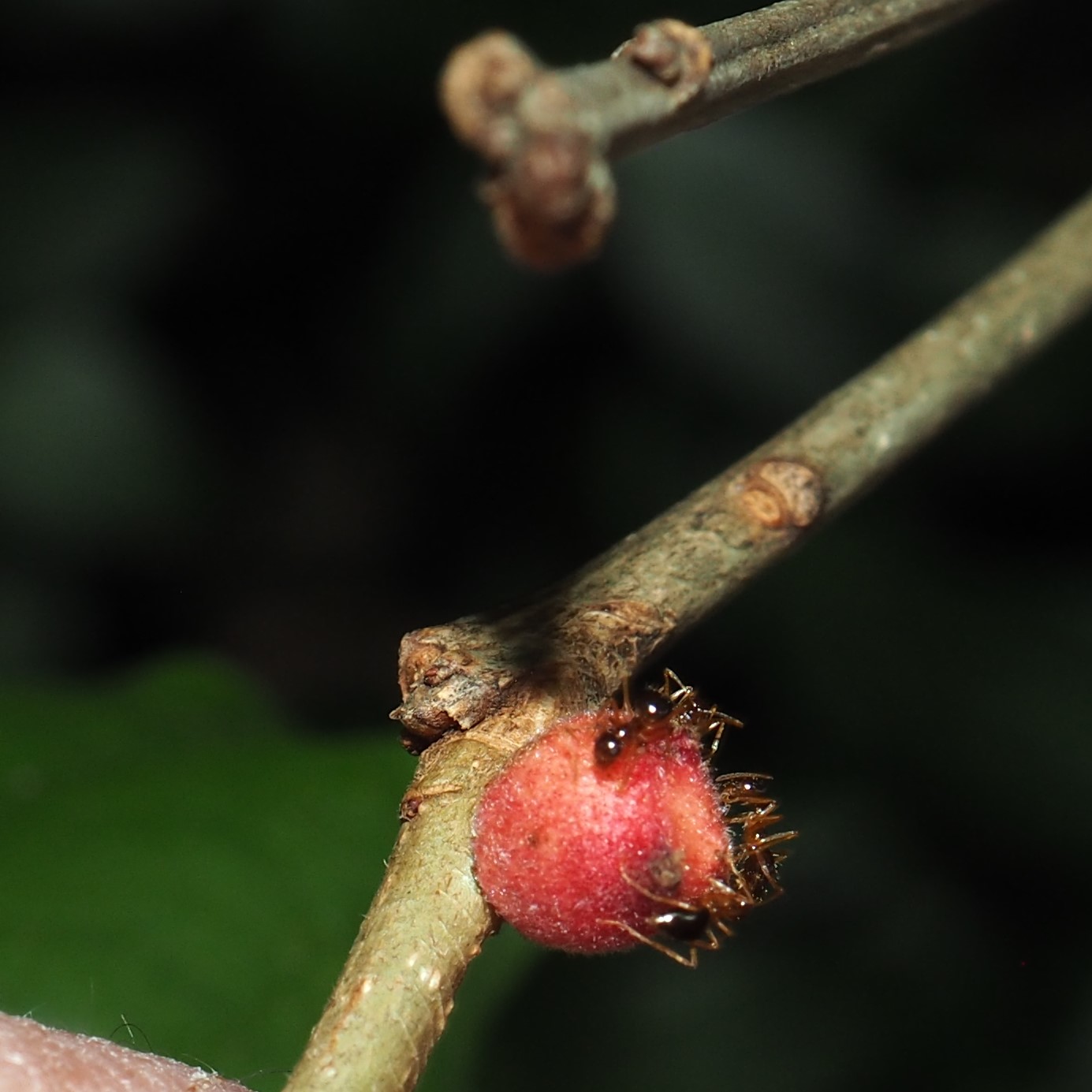
Let's observe some of the lepidoptera. It's alphabetically correct after frog, gall.. and it lets us encapsulate the butterflies, moths and skippers. First is the Cabbage White, Pieris rapae, the favorite pure white lovely butterfly of poets, and the bane of cabbage farmers. I've seen what they can do to a row of cabbages. Then comes the Common Checkered Skipper, or maybe a brown variant of the usual Checkered Skippers. I think this color combo is so sweet, with that magenta Aster. Last, something that didn't fit neatly anywhere else, this is something I'm seeing for the first time. This is the beautiful blue berry that forms from the dropping flowers of the Solomon's Seal plant. Last is for my friend Sofia, who studies Isopods. This is the only form I've seen, since this one is terrestrial.

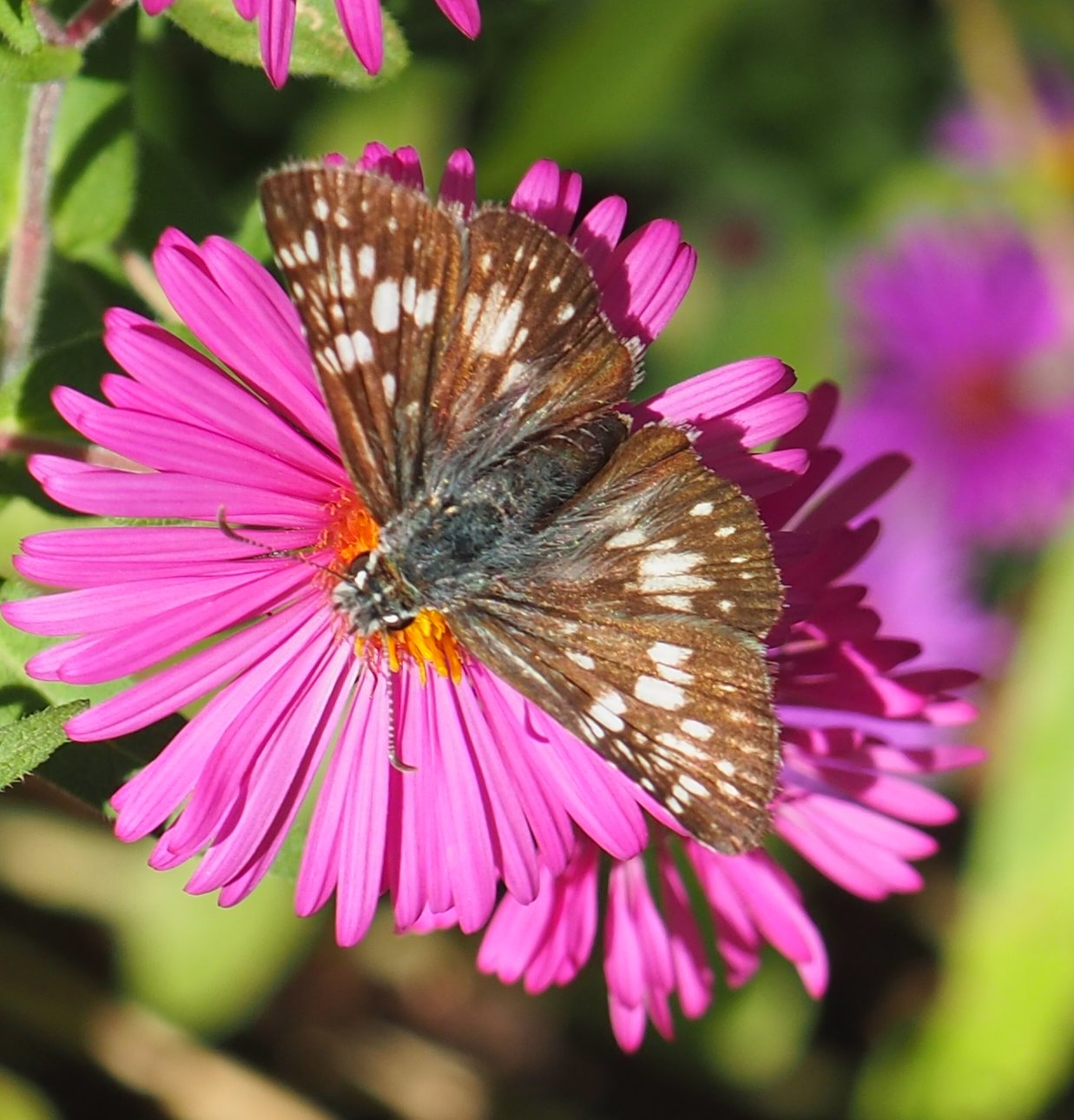

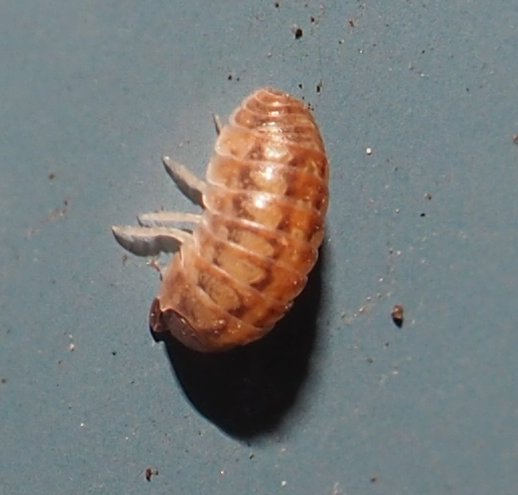
Along with the bright butterflies, we must of course show their baby pictures, well, somebody's baby pictures. First is a picture of the Common Tan Wave Moth as a child. Second is a "looper", which will grow up to be a Geometrid Moth. I also have what you might think is a tragic photo. In it, the caterpillar of a Tobacco Hornworm has been infected by a wasp (Cotesia) who lays her eggs directly into the caterpillar and we know well enough what this does to the caterpillar. What you see here is the baby wasps safe in little cocoons from whence they will come out tiny wasps. This is one of nature's moments in which we realize that life is a contest between competing forms and the result of this competition is the change in the shape of our biosphere.

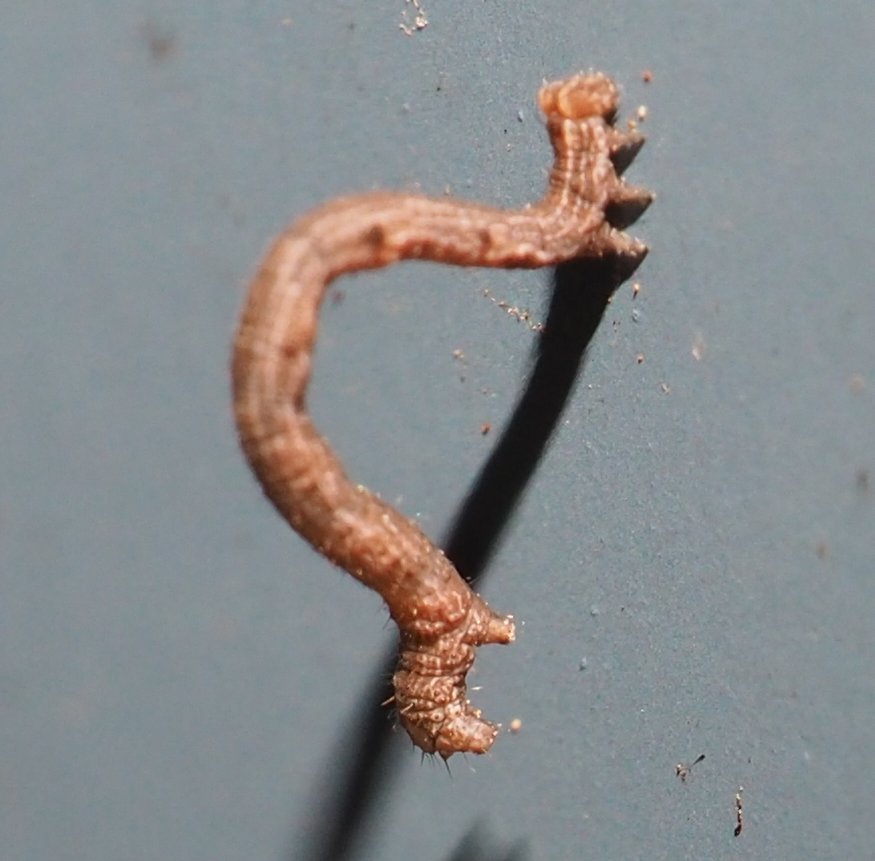
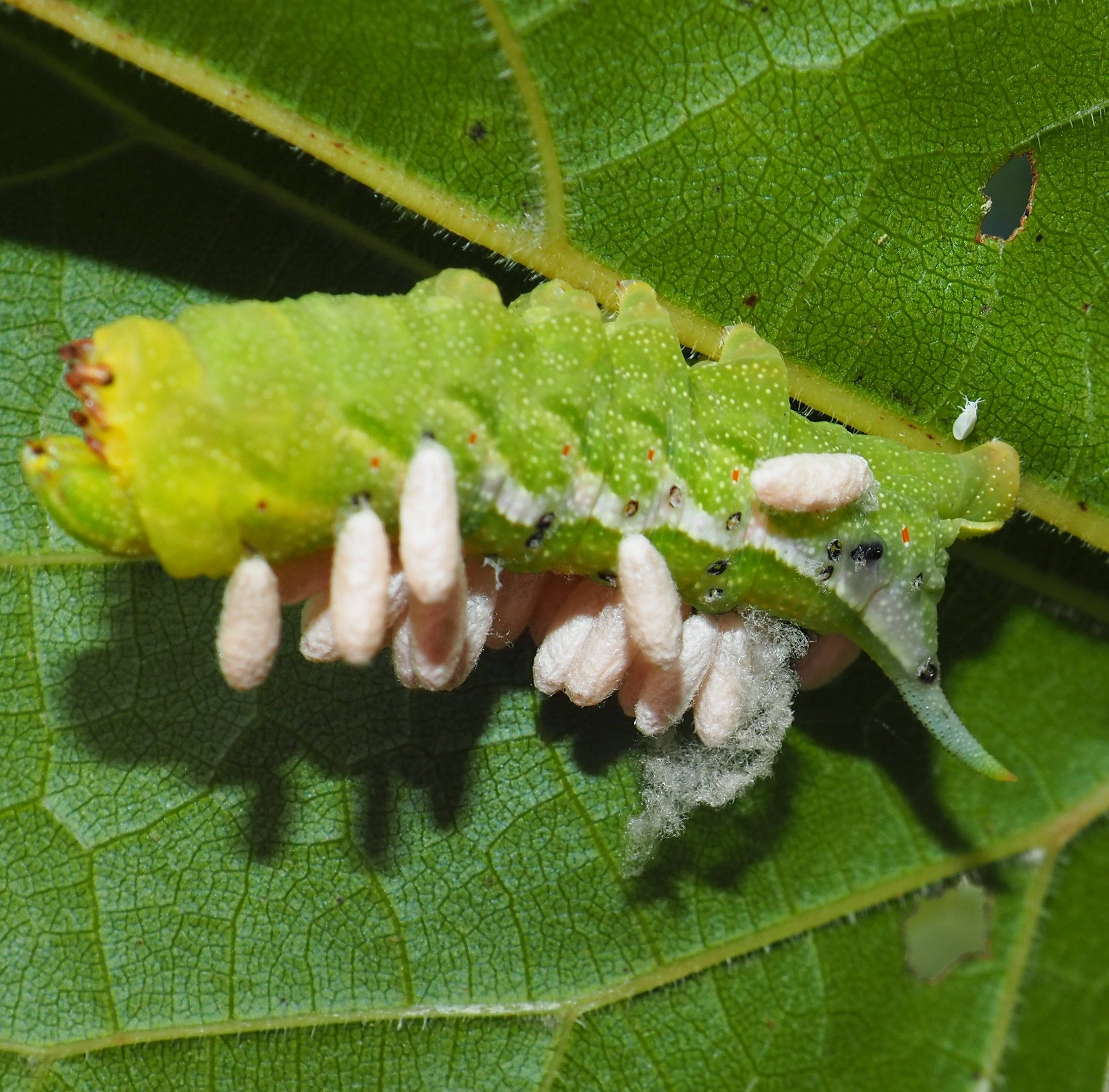
I didn't see so many harvestmen this week, but here is one, hanging discreetly under a bunch of leaves. Could this second one have chosen a better leaf to camouflage itself against? Third is in the midst of some unknown surface? The ramp rail after rain? No clue, but here it is.
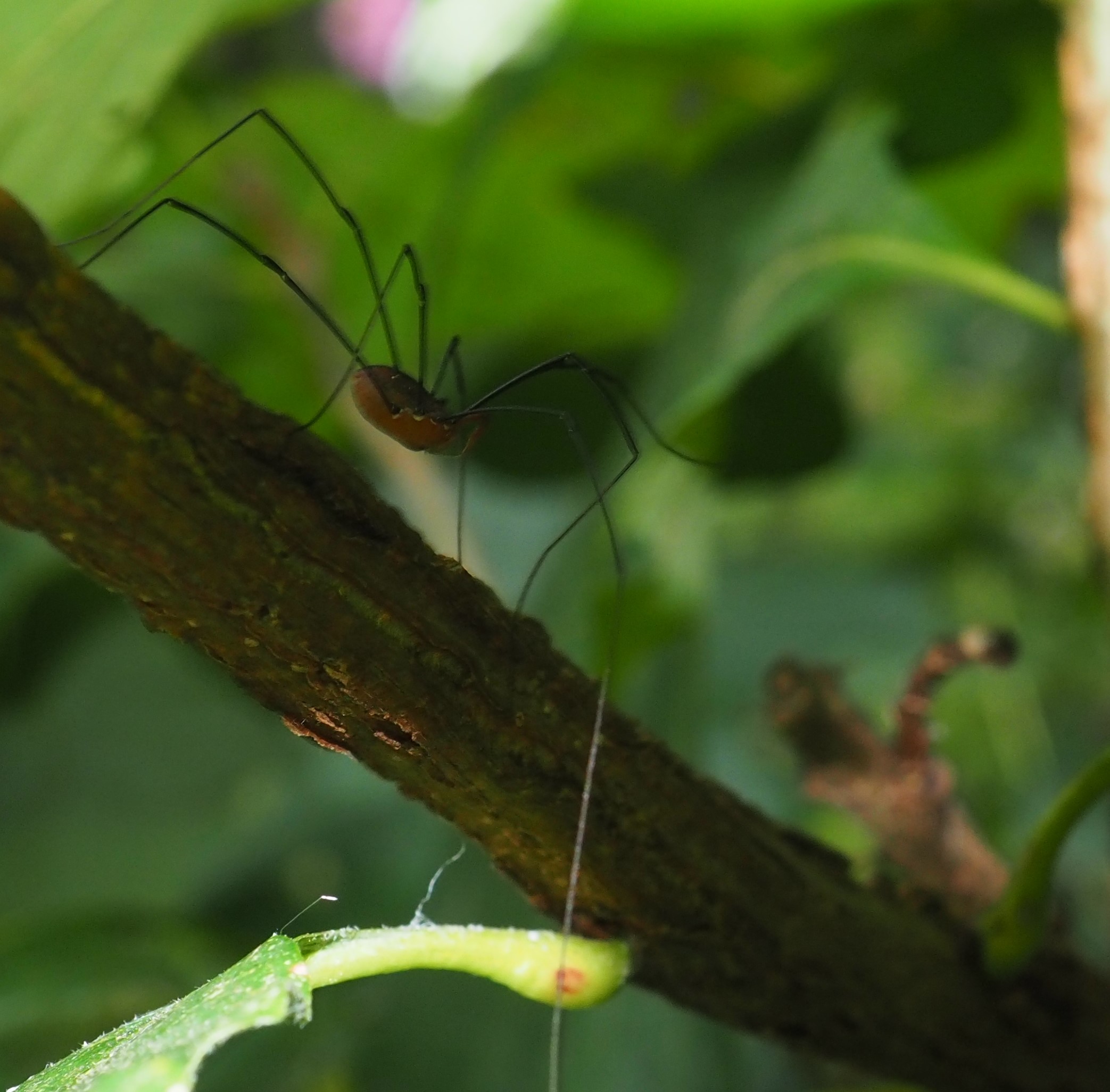
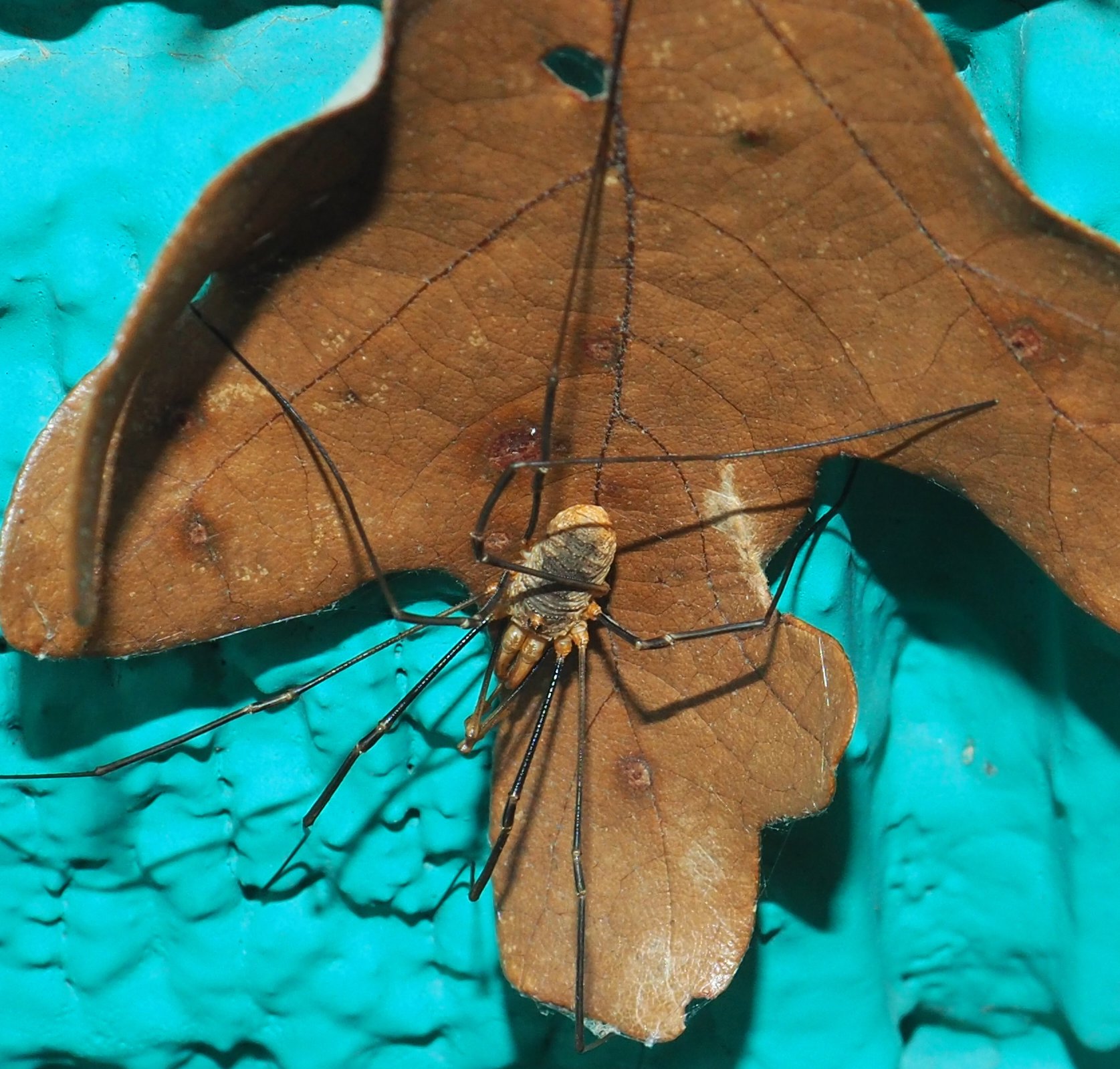

We have a number of nice spiders, some familiar and some not. This little male Common House Spider (he's almost mature but his abdomen has still not gone completely red.) seeems to be offering to spar with someone, not me certainly. The second is a Common House Spider (chs) that has caught itself a nice pillbug. Third and fourth are spiders I will have to identify later.
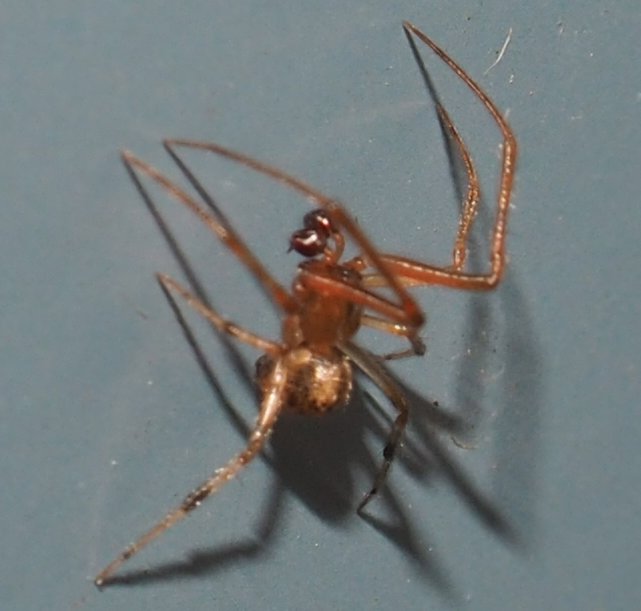


Here are a few new Spiders (to my eyes). Number 1 seems much larger than life. Number 2 seems to have two enormous black eyes or dark dark sunglasses. In the third image, it does seem to me that there are more than one spider in amongst the fading goldenrod flowers. Fourth is another new spider. Doesn't it seem like a kind of toy?

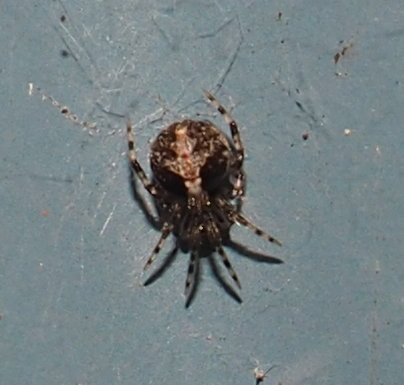
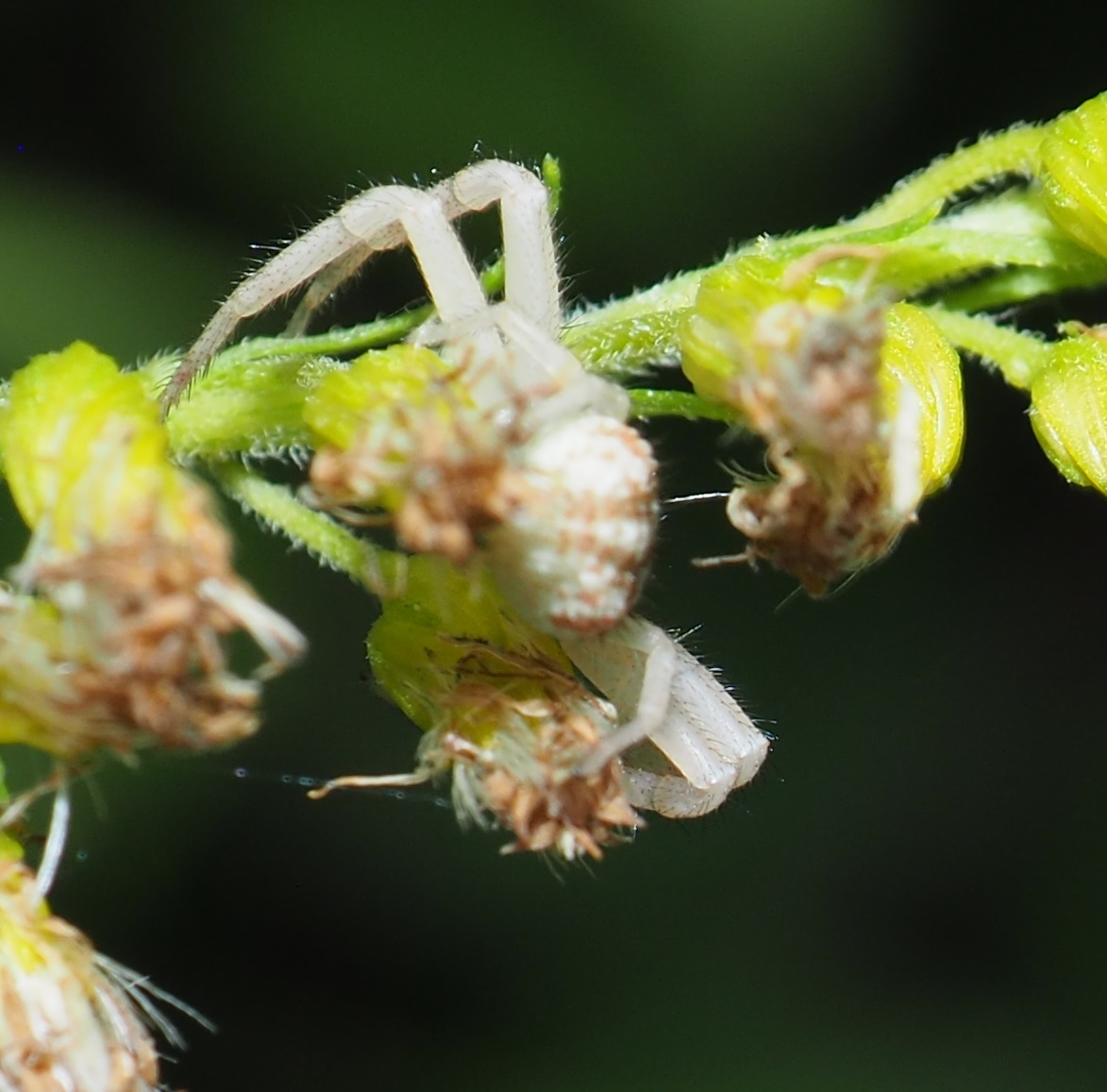
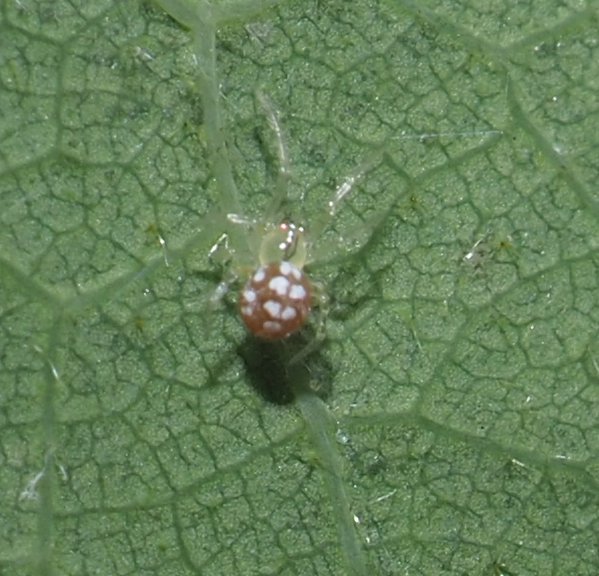
We still have a bit to say about the wasps left behind by the disappearance of the Goldenrod. Our very small potter wasp, Ancistrocerus adiabatus, is enjoying the nectar of a magenta Aster. But another has discovered that with our delight in the Aster scene, we've missed the inception and the growth of a tiny Daisy-like flower which will see out the blooming season. So another A. adiabatus is filling up on it. A little Bee Wolf seems less little on the tiny daisy..
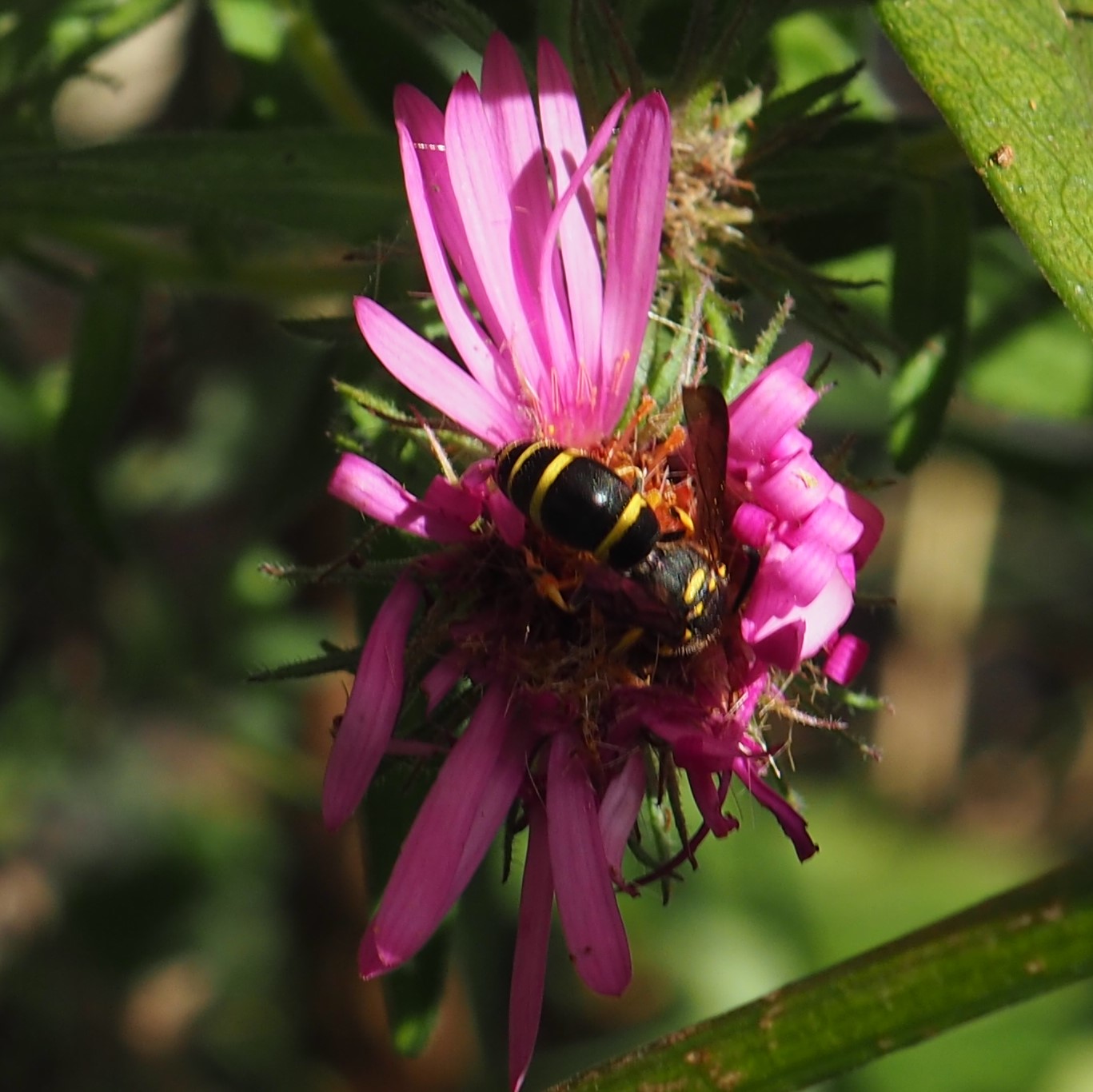
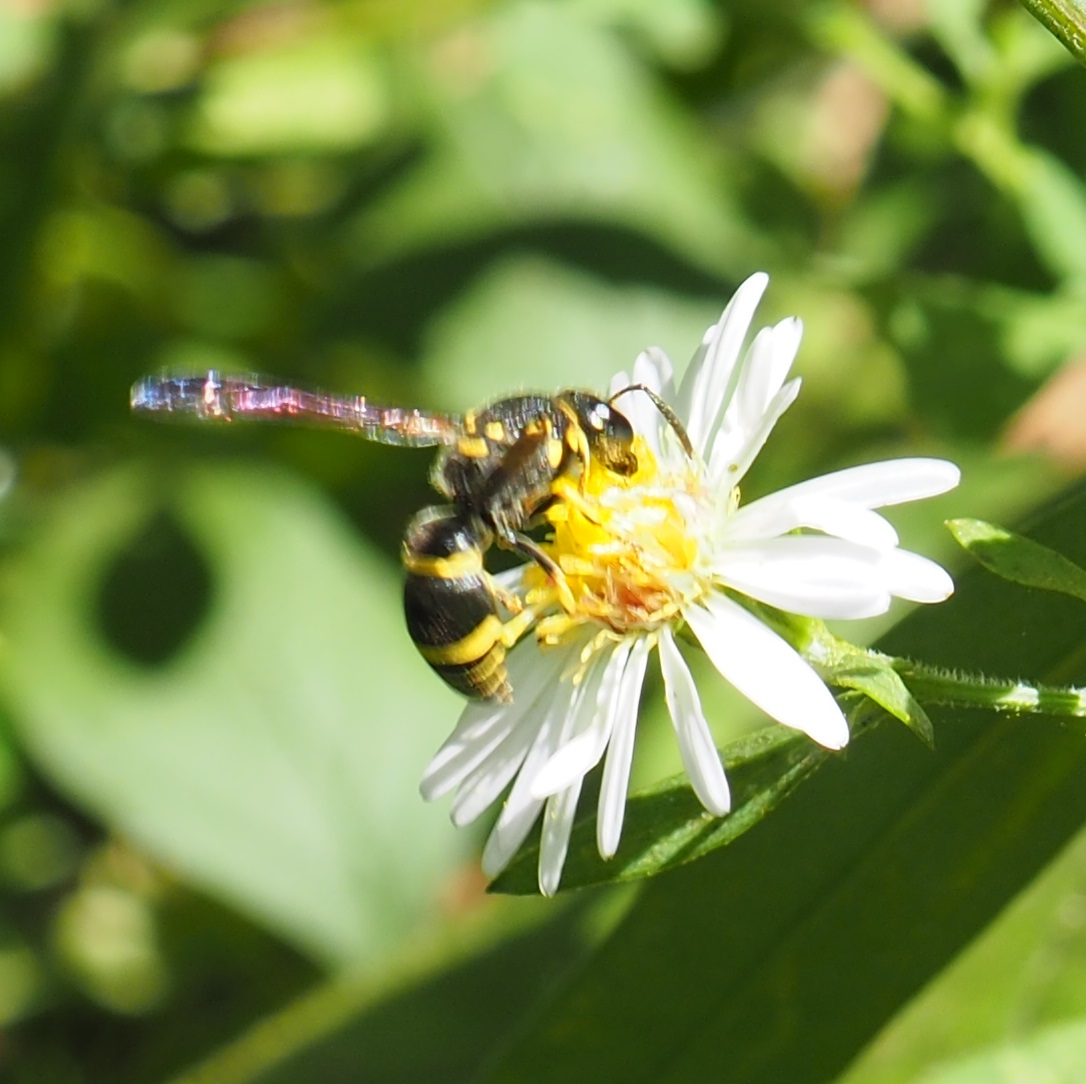
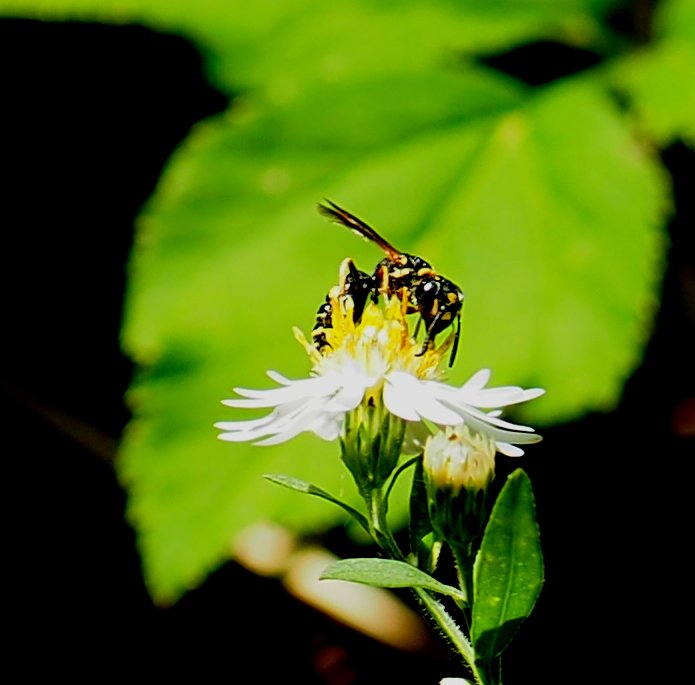
The lilies keep coming, slowly, slowly. I love how the black and white seeming shadows play on the bright water and resemble a kind of abstract painting behind the pink lily. Of course, they're also nice with a full palette. And let's remember when the magenta Asters were in full bloom.
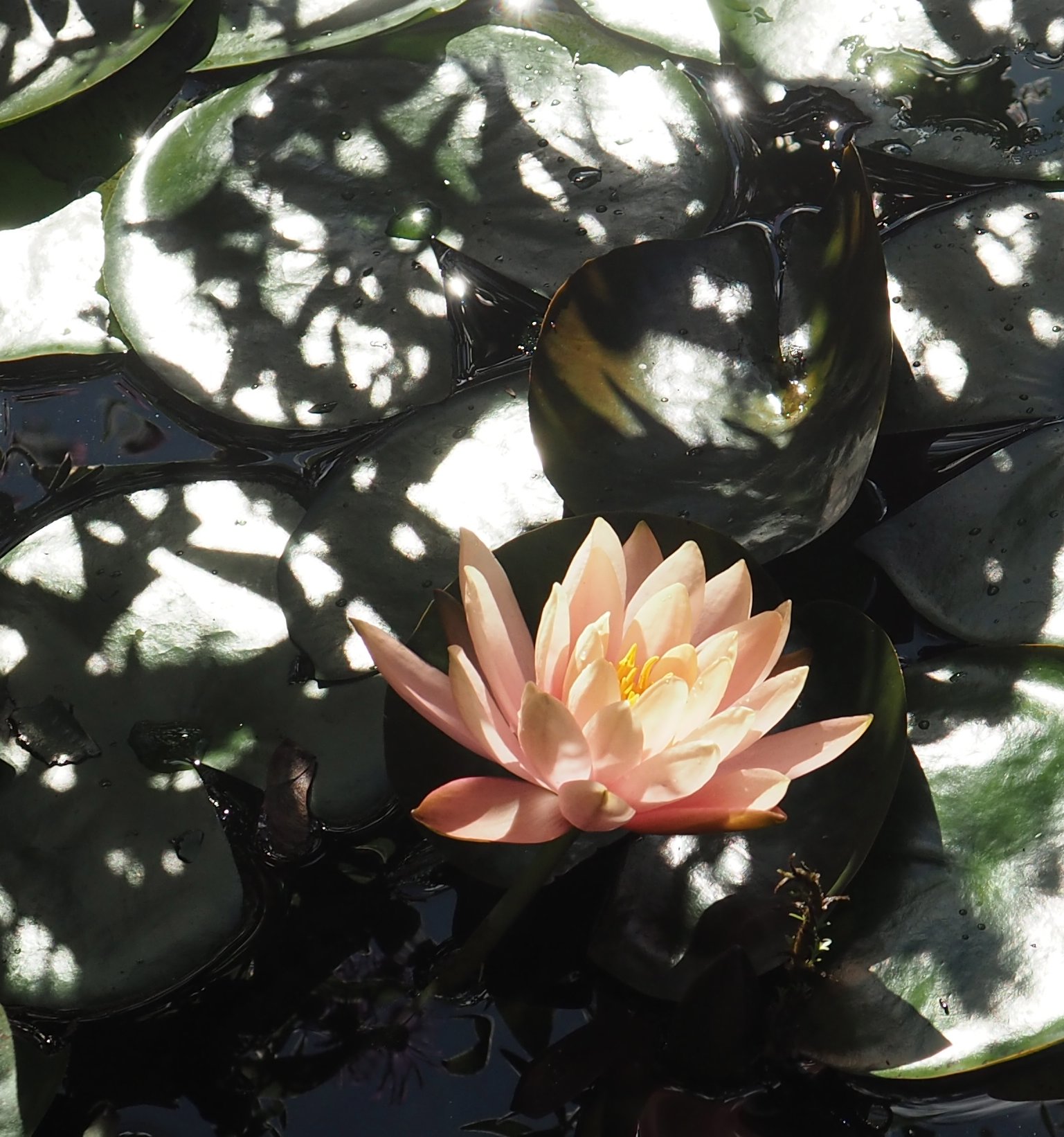
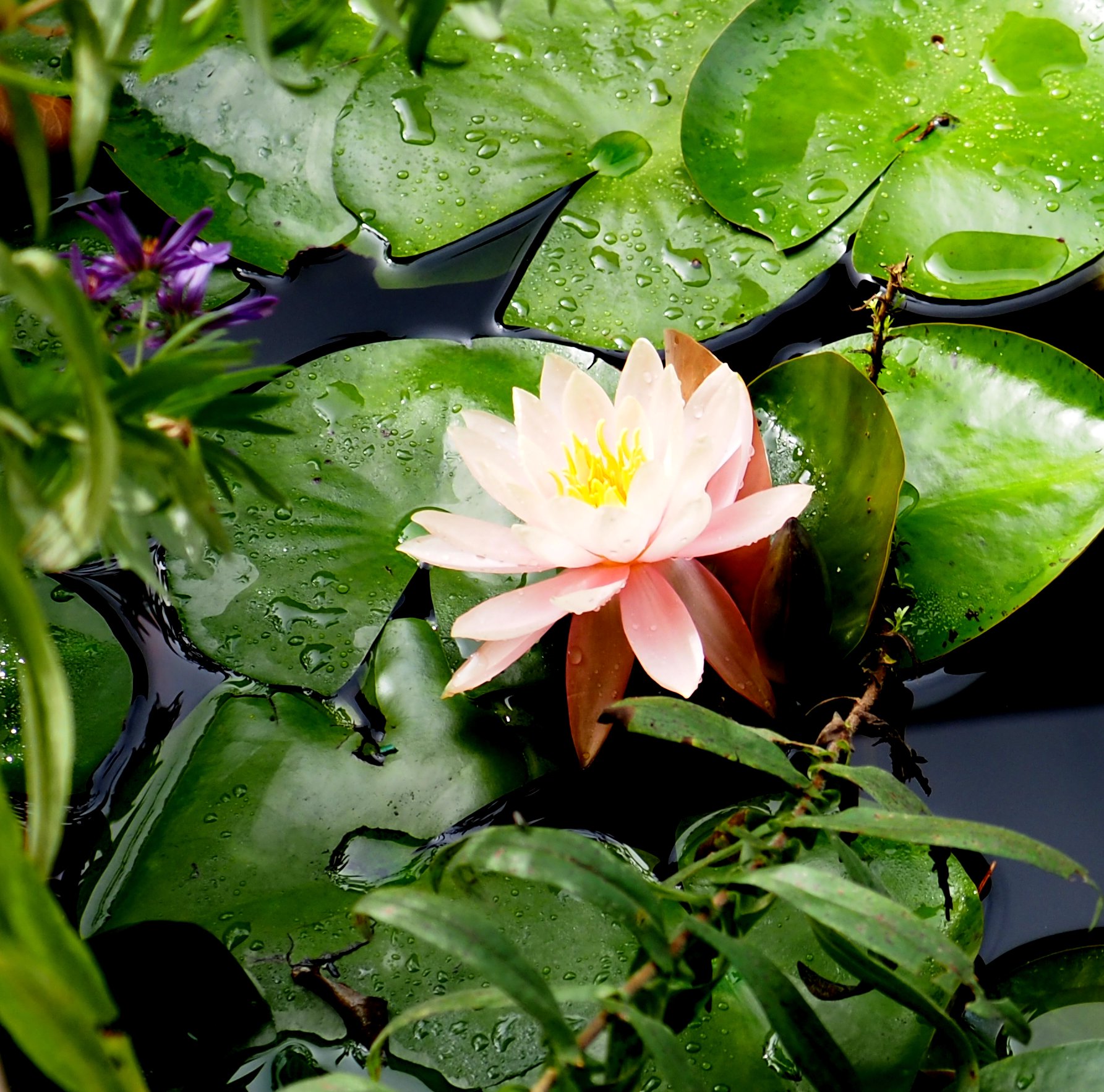
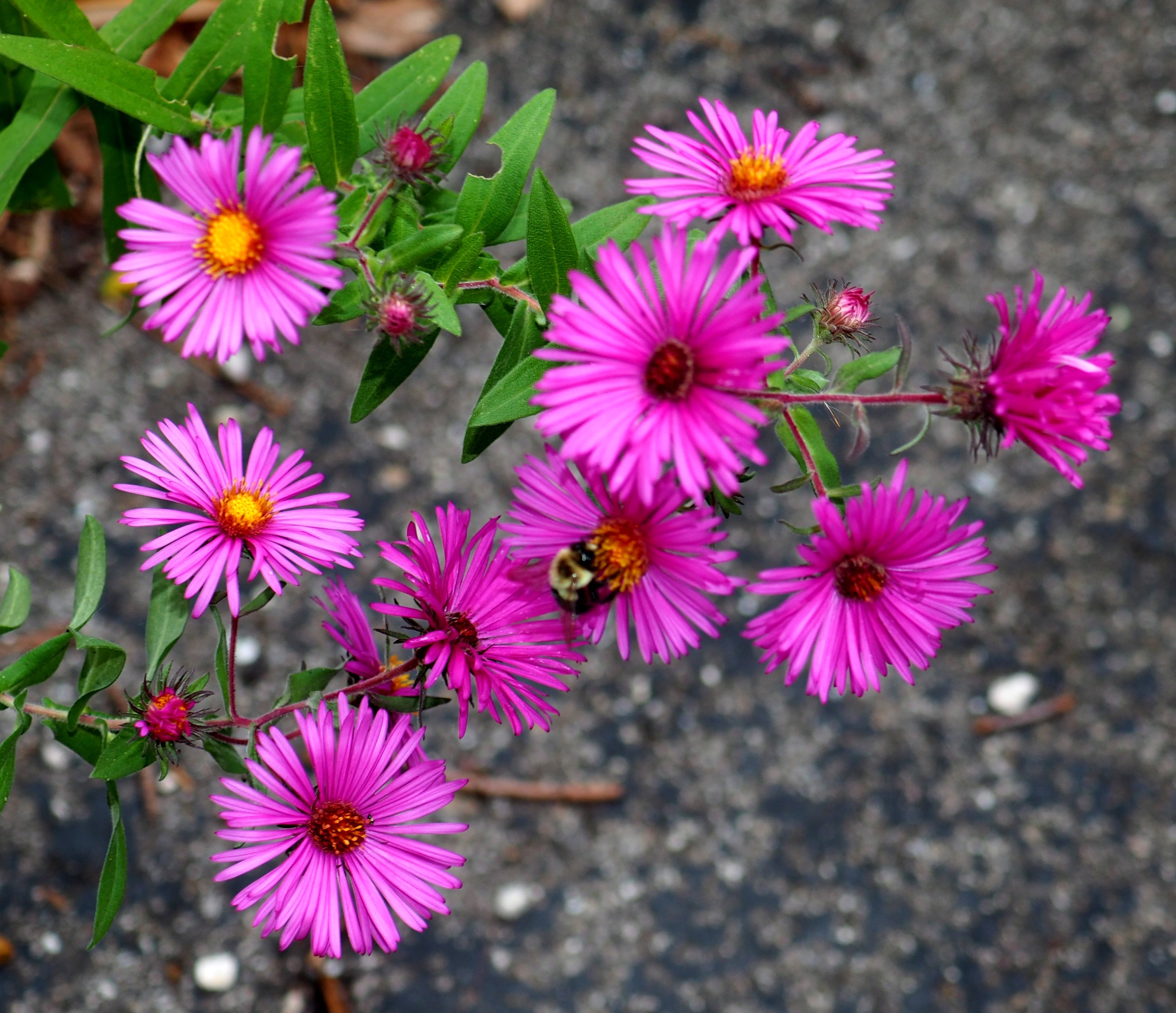
I've spent the past few days processing the bits of the tree that fell last week into a) leafy twigs to be collected by the city and hopefully carried off to the tree dump and b) slightly larger lengths of wood for my neighbor to use for firewood. What a crashing bore of a job, especially as the leafy bits need to be placed in huge paper bags for the purpose. But I'm alive and actually did something useful around here.
Take as much care of yourselves as you feel you need. And enjoy the changing biosphere. If you don't know what that is, look it up. I do actually consult a dictionary from time to time to try to get my usages as nearly standard as possible. For instance, I was about to use "bioscope" for "biosphere", not knowing it has another meaning something like a "theatre" in Britain and its offshoots. Anyway, really take care!
Love to all, Martha
Back to September 23, 2018
Forward to October 7, 2018
Back to main menu
copyright Martha O'Kennon 2018
 -
-


 -
-
















































































